I signed up for an eight-day hiking trip along Portugal’s Fishermen’s Trail, part of the Rota Vicentina, with Intrepid Travel. The itinerary included five days of hiking, a rest day, and travel days at each end. There were just four of us, all traveling solo—an international mix: one from Germany, one from Australia, another from Zimbabwe, and me from the United States.
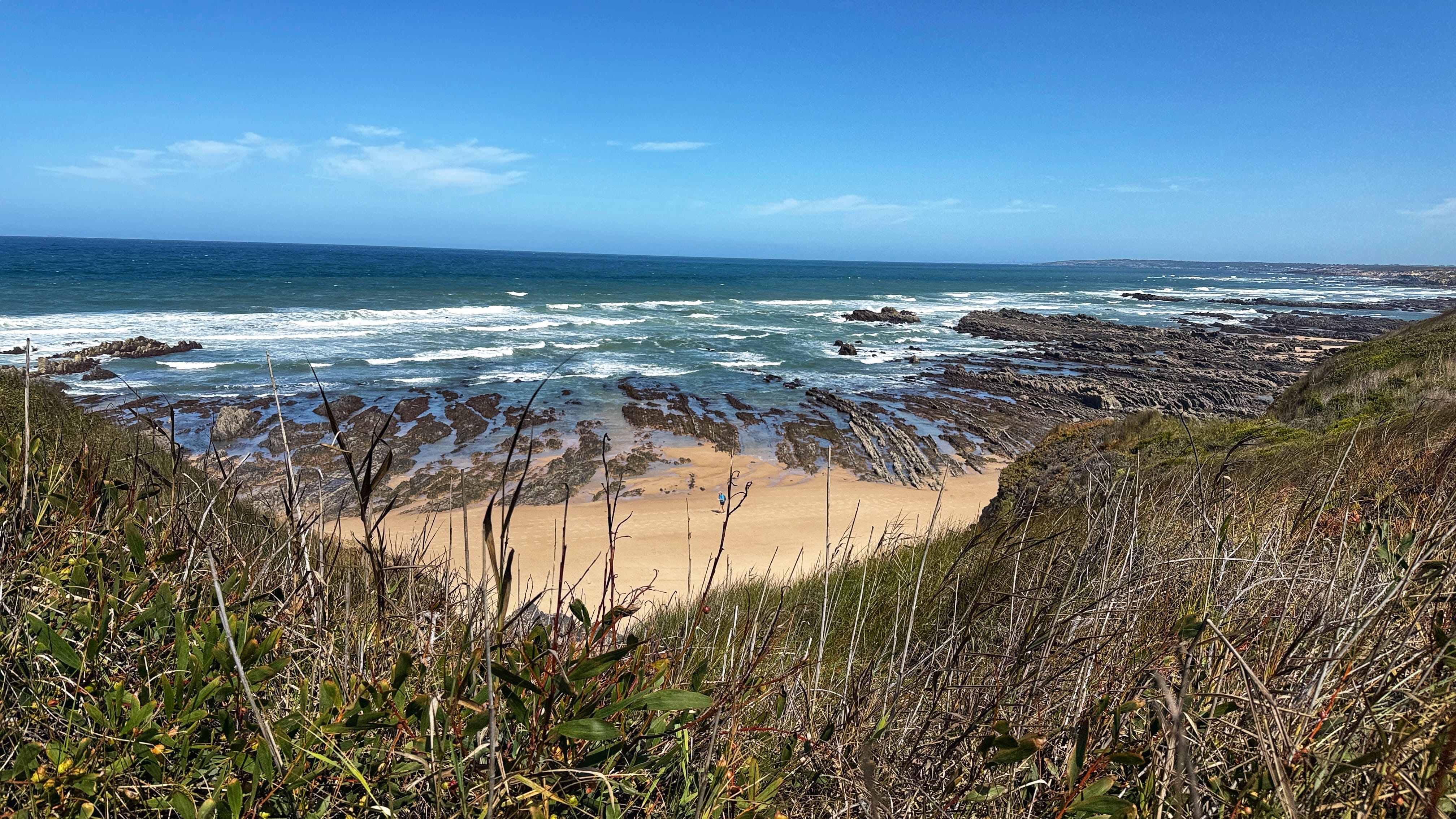
We met our guide the night before in Lisbon. Over dinner, we traded introductions and stories, and by the end of the night it was clear this was going to be a fun group to hike with.
The Rota Vicentina isn’t just one trail but a network that winds through Portugal’s southwest coast and countryside. The section we hiked, the Fishermen’s Trail, follows the Atlantic shoreline for about 200 kilometers. Traditionally used by locals to reach hidden beaches and fishing spots, it sometimes goes along cliff edges that drop straight into the sea.
The scenery was unforgettable—not just the cliffs and crashing waves, but also the plant life and the wild, empty beaches. Because much of the route passes through protected parkland, it still feels raw and unspoiled.
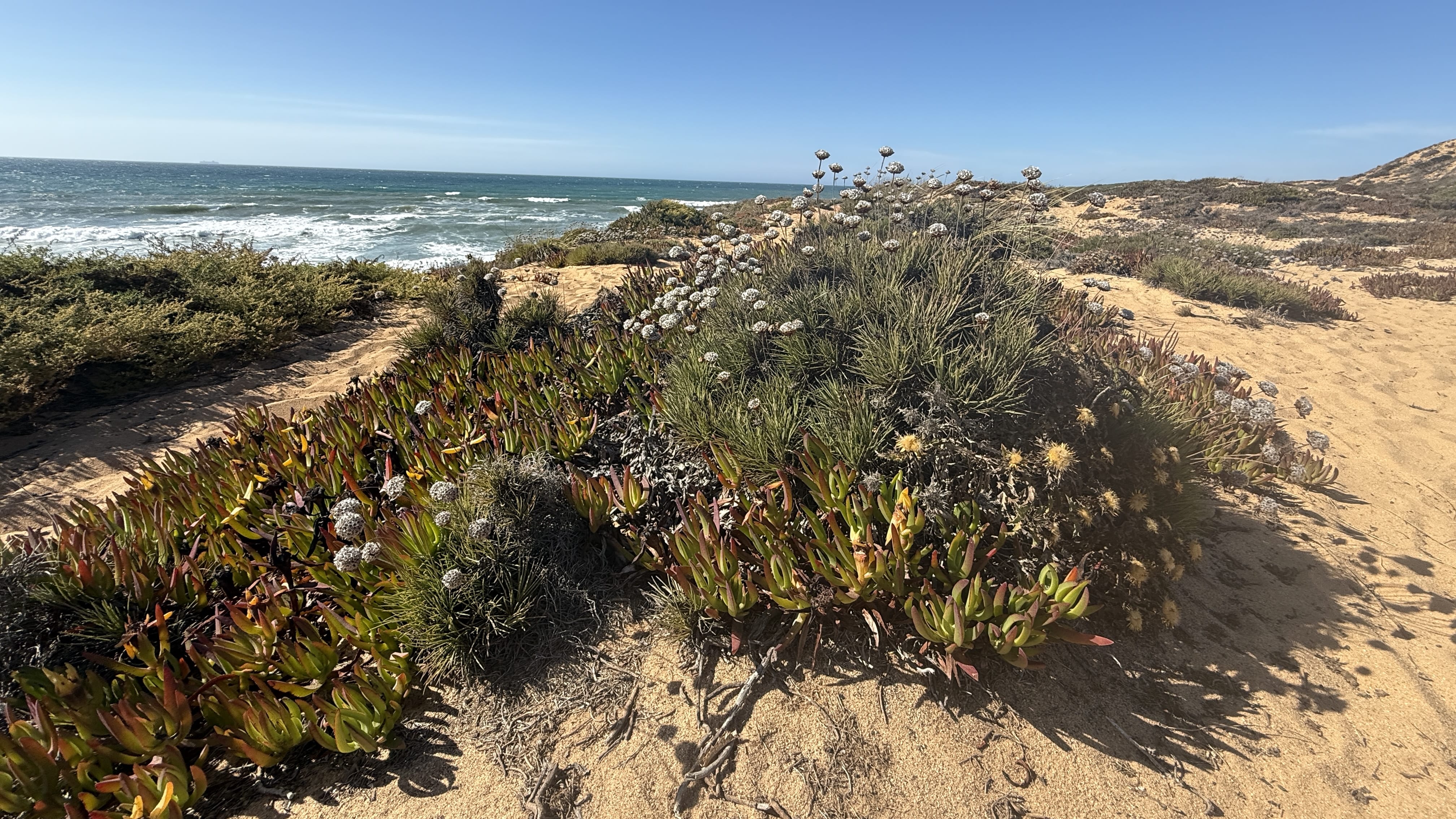
Since I didn’t want to hike alone, I went with Intrepid’s group trip. The six-day version gave me a good feel of the trail—the coast, the challenge, and people to do it with.
Here’s how it unfolded, day by day.
The trip officially kicked off in Lisbon with an evening meet-up. Our guide walked us through the week’s plan, covered the basics, and gave us a chance to get to know each other better. I was glad I’d arrived a couple of days early—otherwise I wouldn’t have seen the city at all. The next morning we’d head out early for Portugal’s southwest coast to begin the Fishermen’s Trail.
We left Lisbon after breakfast, crossing the Vasco da Gama Bridge and heading south into the Alentejo. The scenery shifted to farmland and cork oak groves. Storks seemed to have nests everywhere—on rooftops, on power poles, even in the tops of trees.
Two hours later we reached Malhão, a quiet stretch of dunes and cliffs where our section of the Fishermen’s Trail began. The official start is farther north in Porto Covo, but this is where we were starting.
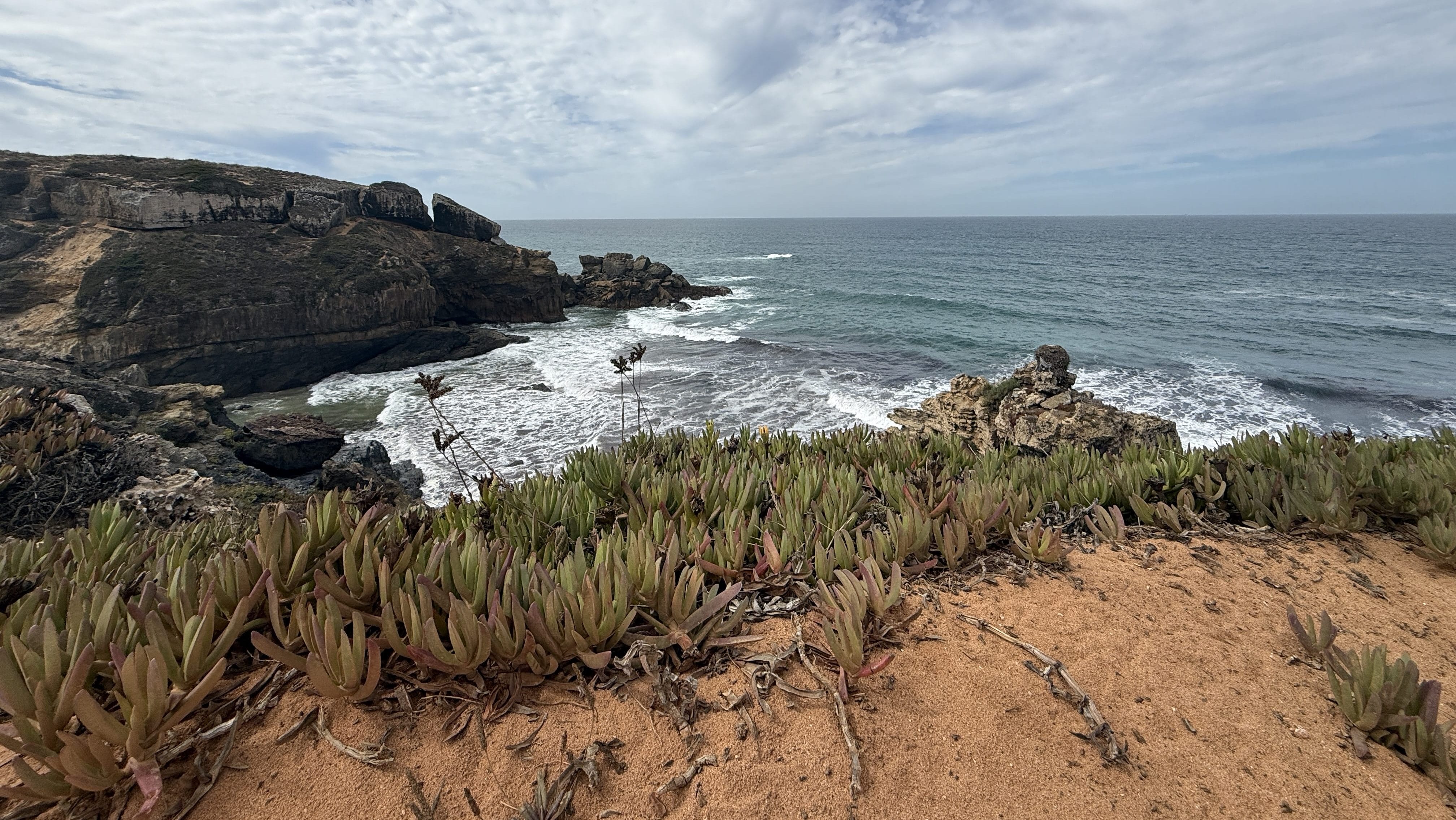
The path was lined with sour fig, a creeping succulent spreading in red and green mats that almost looked like the ground was on fire. Waves pounded the cliffs below, and every so often a hidden beach appeared—tucked between rock walls — reachable by scrambling down or from the sea. Every so often, I’d spot a lone fisherman out on the rocks, casting into the waves— the perfect image for a trail with this name.
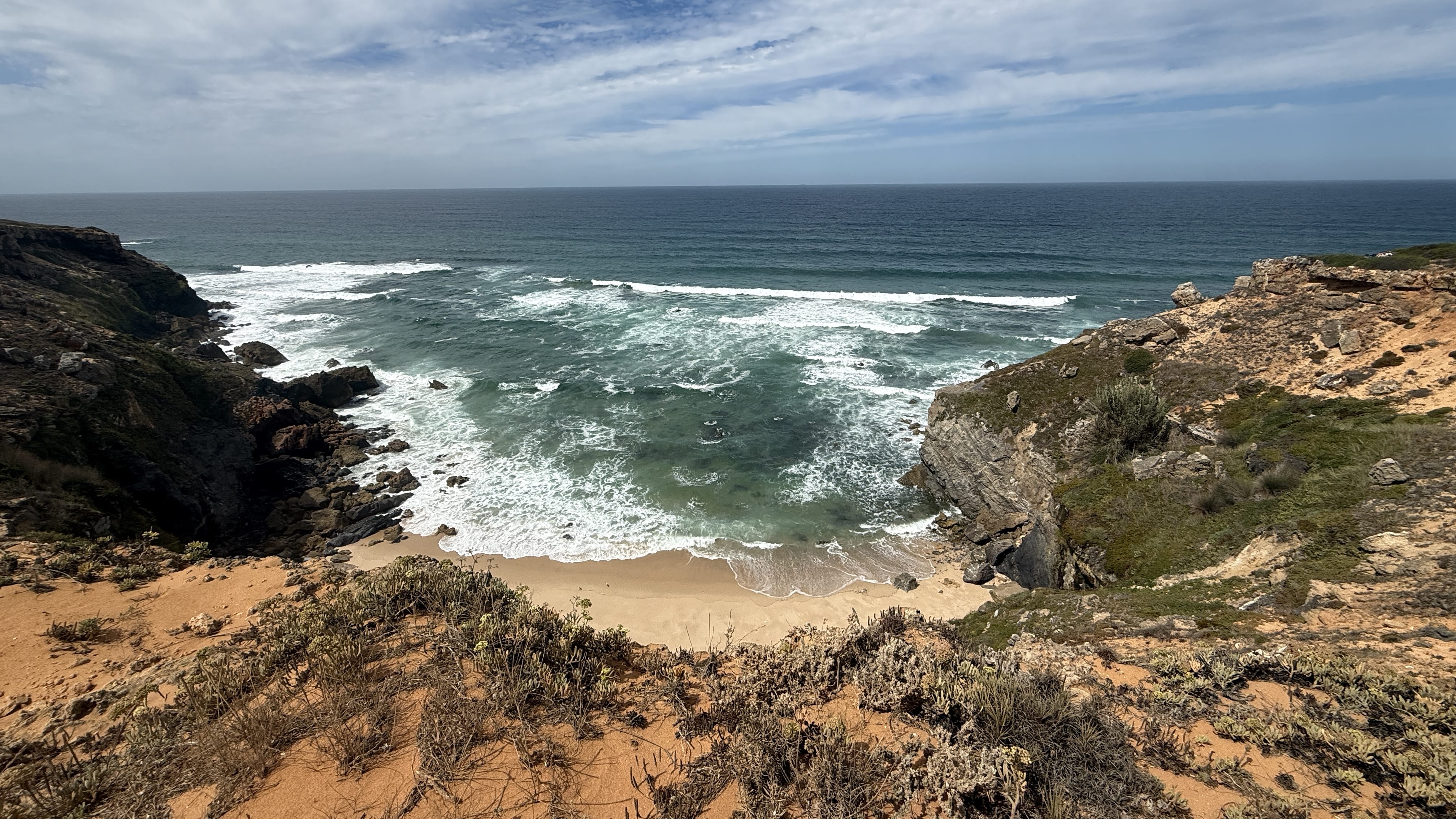
A steady ocean breeze kept the heat down, though the sun was still strong. The trail was easy to follow and well marked with blue-and-green stripes painted on rocks and posts. It was also my first real taste of hiking in soft sand. Six miles isn’t far, but sand makes it more work. I’d brought short gaiters to keep it out of my boots. They didn’t block everything—I still had to dump sand out—but a lot less than the others.
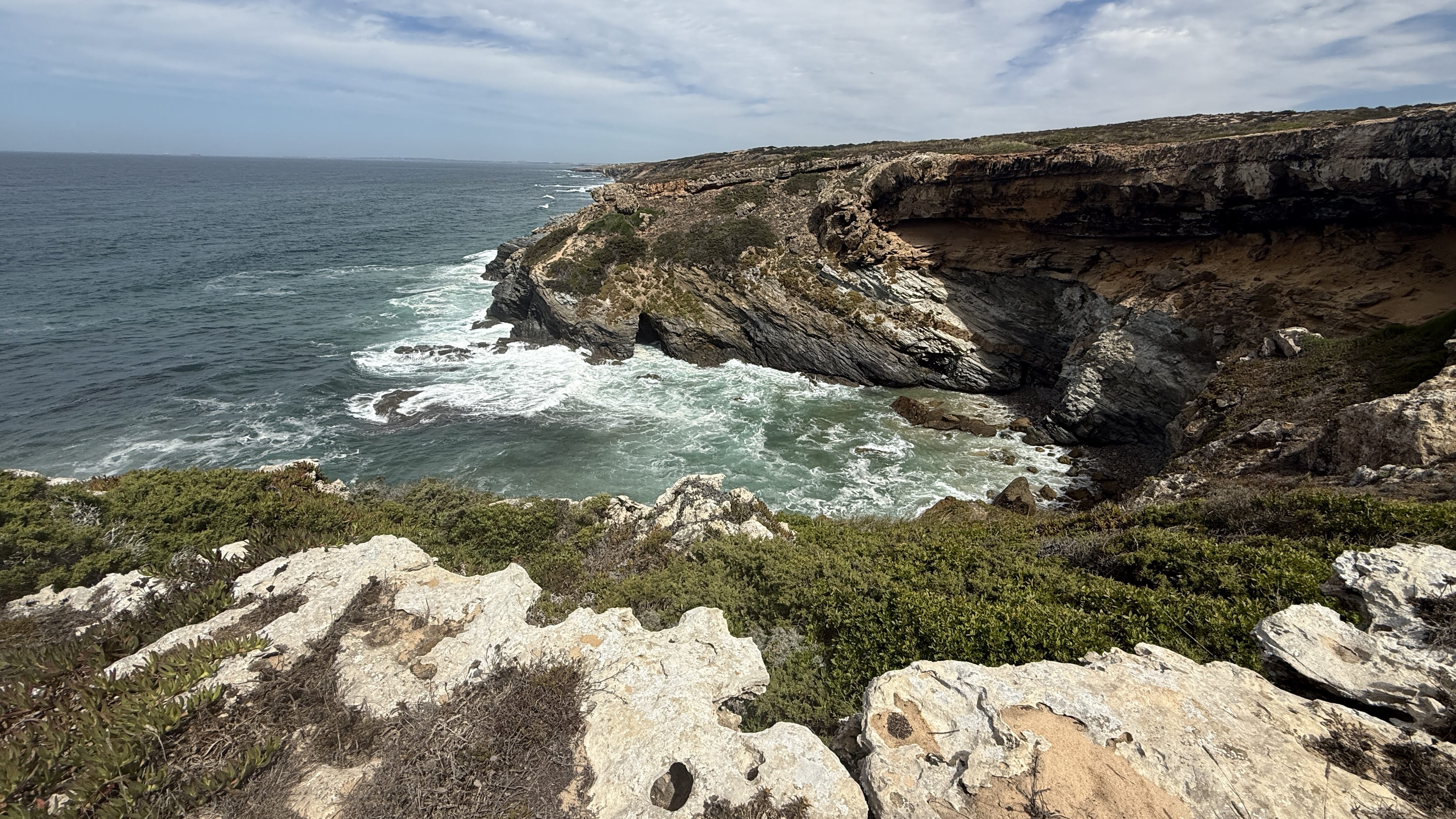
We stopped at Restaurante Wine Bar Porto for a quick break—drinks, a sit-down, and a chance to shake out the sand.
By mid-afternoon we arrived in Vila Nova de Milfontes, a seaside town on the Mira River, right at the edge of the Atlantic. It has that in-between feel: part fishing village, part summer getaway. We stayed at HS Milfontes Beach Duna Parque Hotel—an easy walking distance to everything.
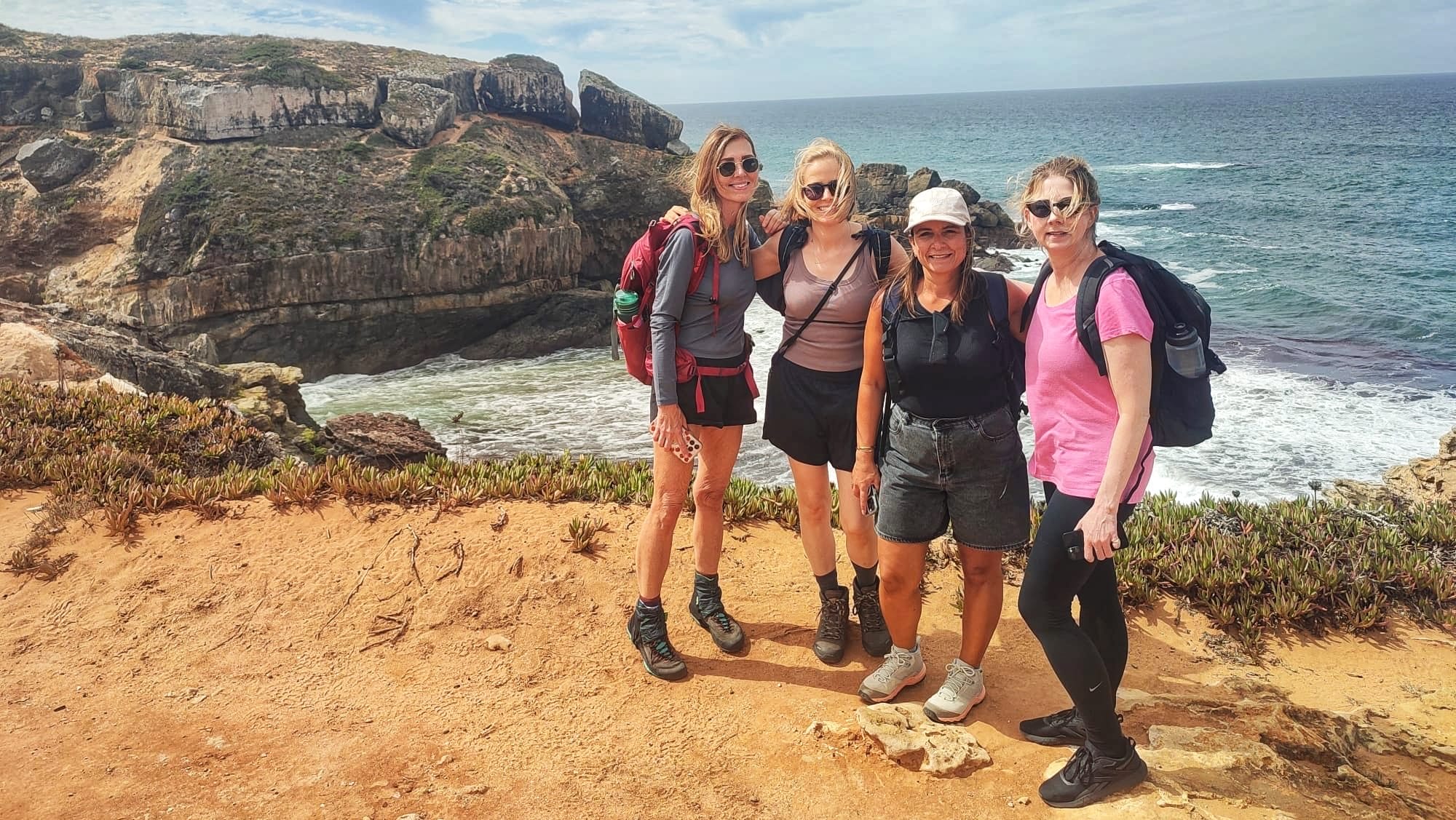
That night we had dinner at Manjericão, a casual local restaurant, and ordered a couple of pizzas to share. We paired them with a bottle of vinho verde, Portugal’s light, slightly fizzy “green wine.”
Vila Nova de Milfontes also has a few small but interesting sights: the parish church, Igreja de Nossa Senhora da Graça (Church of our Lady of Grace); the 16th-century Forte de São Clemente (Fort St. Clement), built to guard the river; and several beaches in walking distance.
In the morning, we headed to the marina just past the fort and took a short boat ride across the Mira River from Vila Nova de Milfontes to Praia das Furnas (Furnas Beach) . From there we walked along the beach for a bit before rejoining the trail. The landscape shifted between dunes, marshes, and low cliffs, with views of the Atlantic most of the way. At times the path wound through thickets of Sydney golden wattle, their yellow blossoms bright against the green.
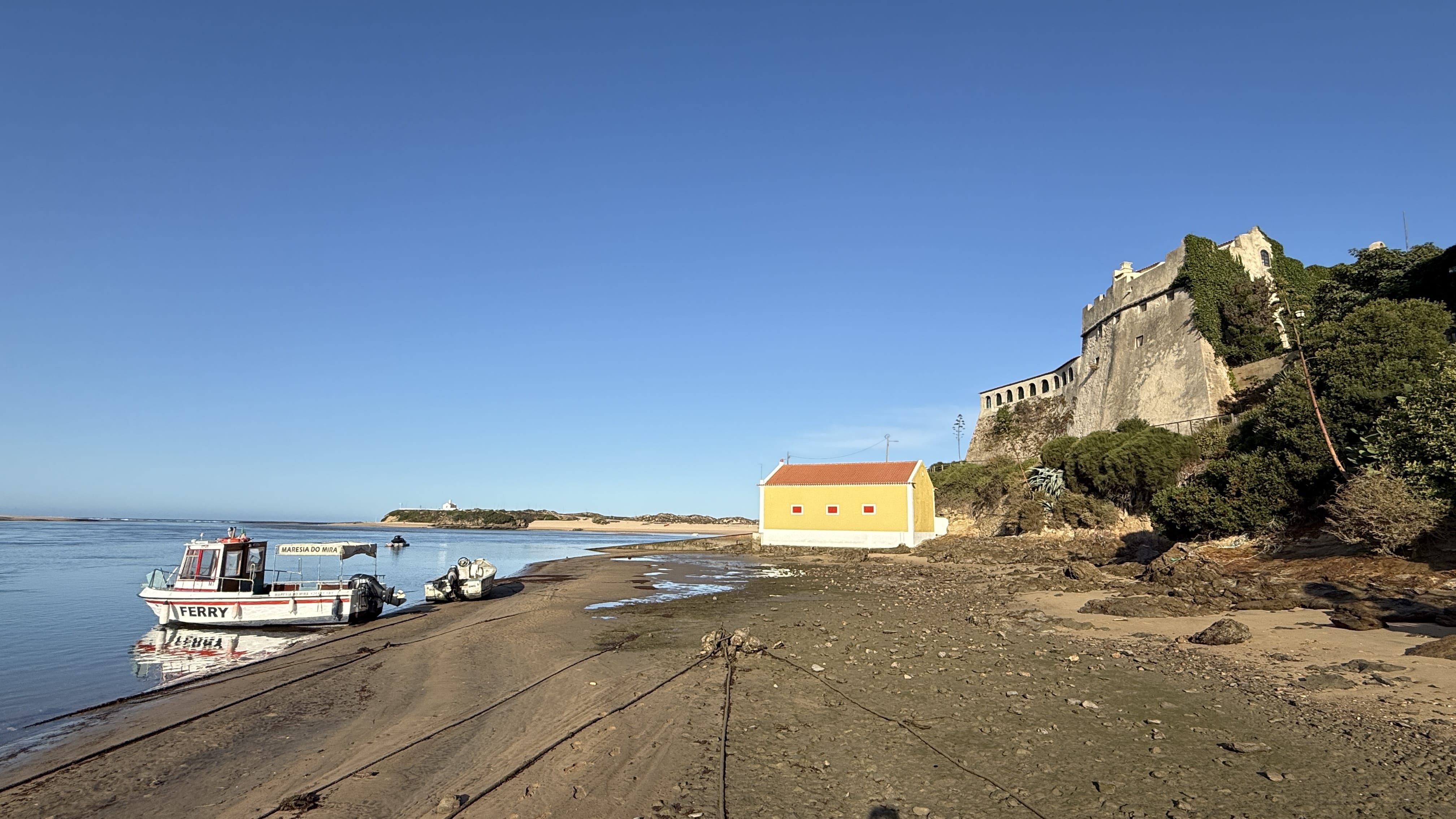
At one point we came to a junction where the Fishermen’s Trail overlapped with one of the shorter circular routes, the post painted in blue, green, yellow, and red. (On the Rota Vicentina, red-and-yellow marks always point to those local loop trails.) Not long after came one of the highlights of the day: Praia do Brejo Largo (Brejo Largo Beach), a wide crescent of golden sand backed by cliffs—that looked wild and endless.
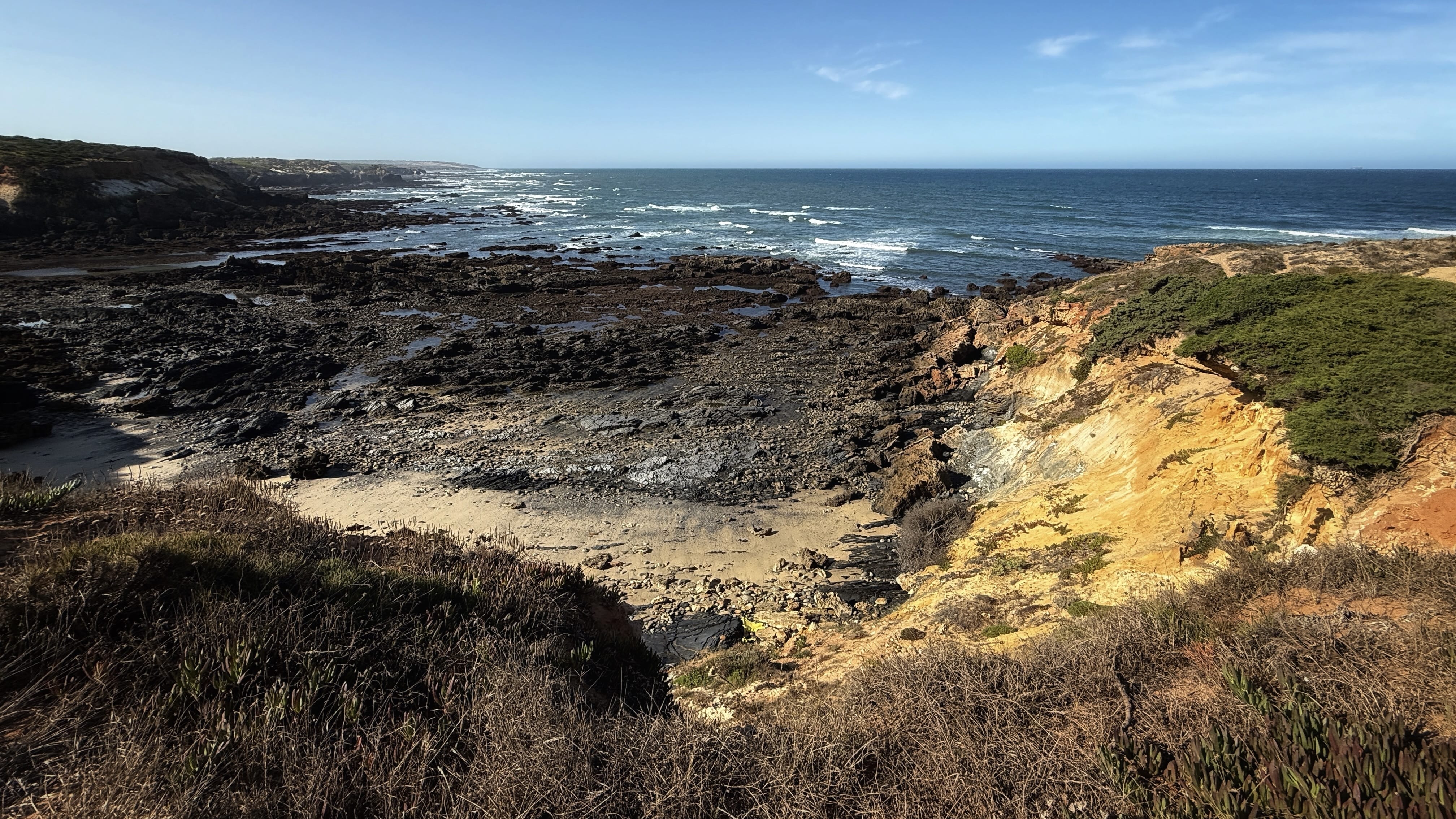
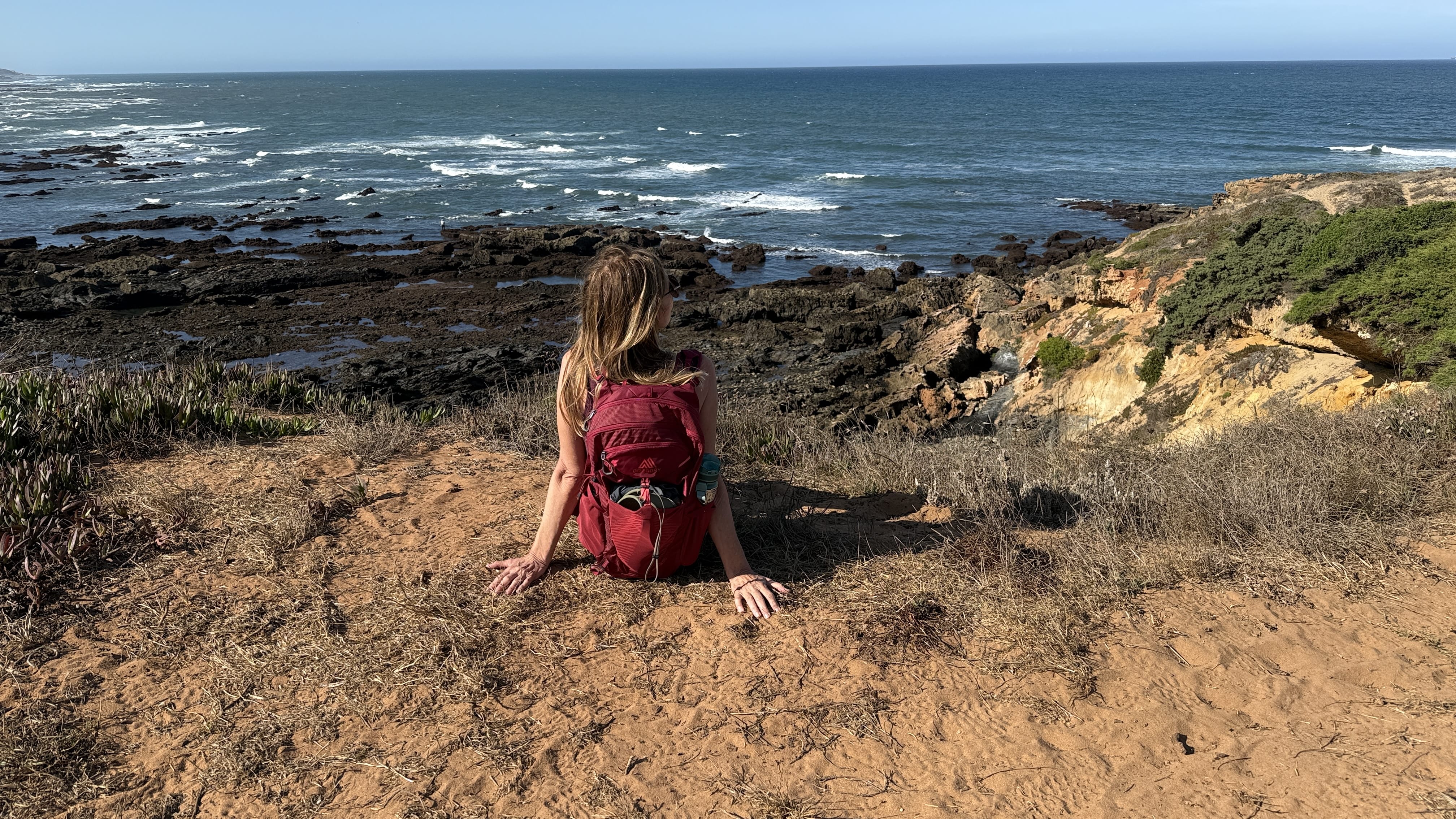
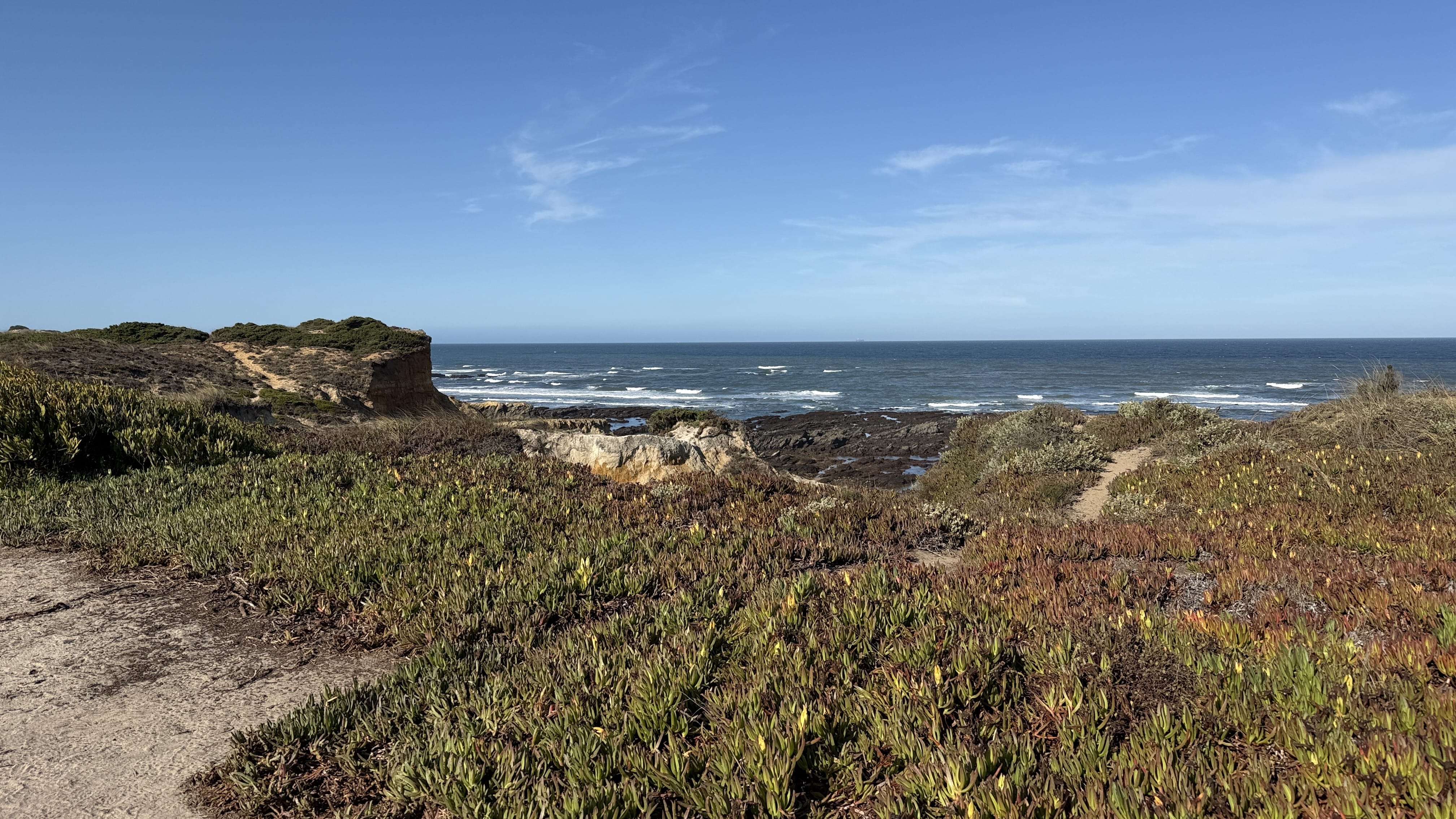
By midday, as we were getting closer to Almograve and at some point the sandy path gave way to a dirt road, which we followed for a bit. Almograve is one of the smaller villages along the Fishermen’s Trail—just a few streets, a handful of restaurants, and a quiet, local feel.
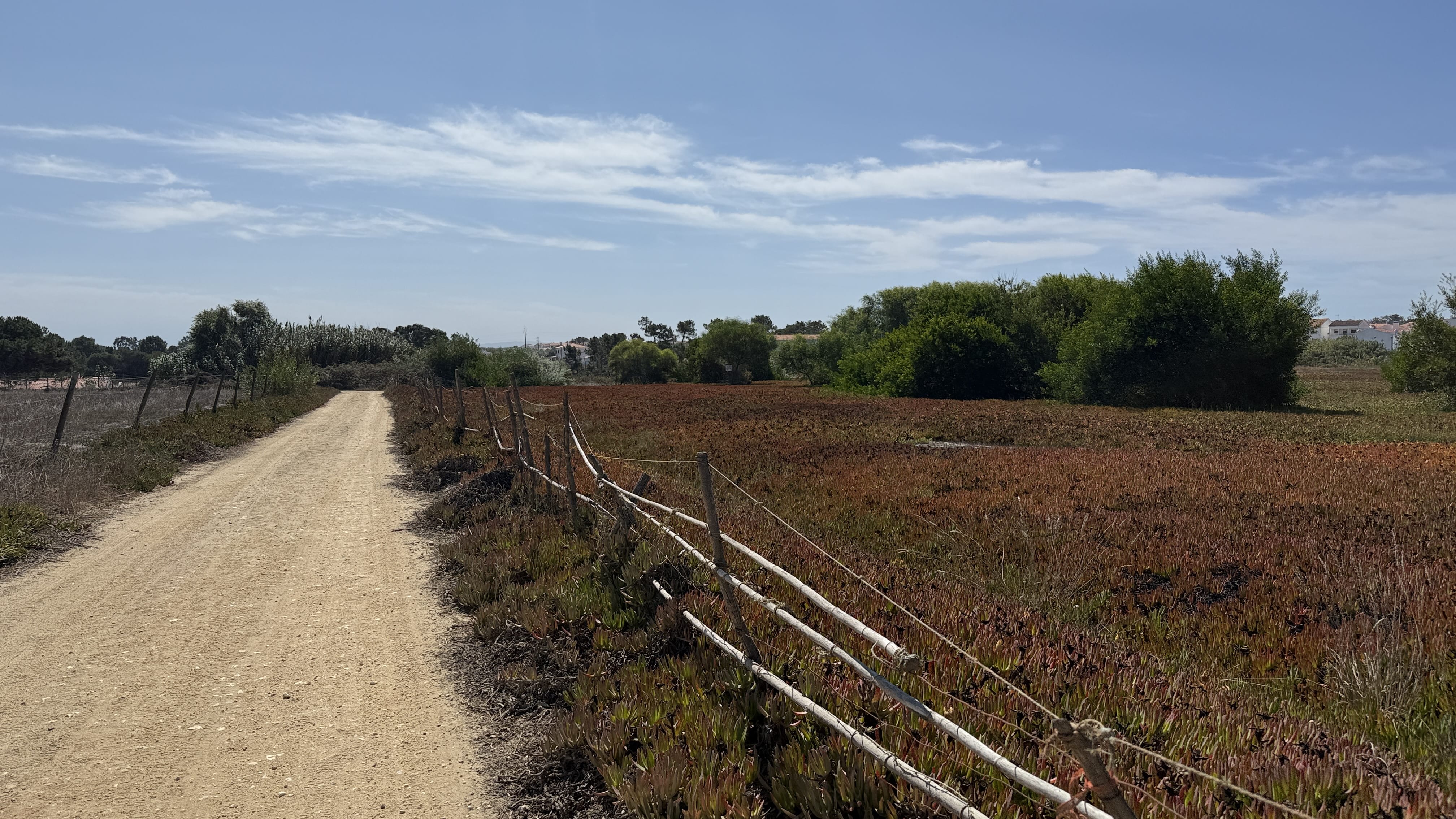
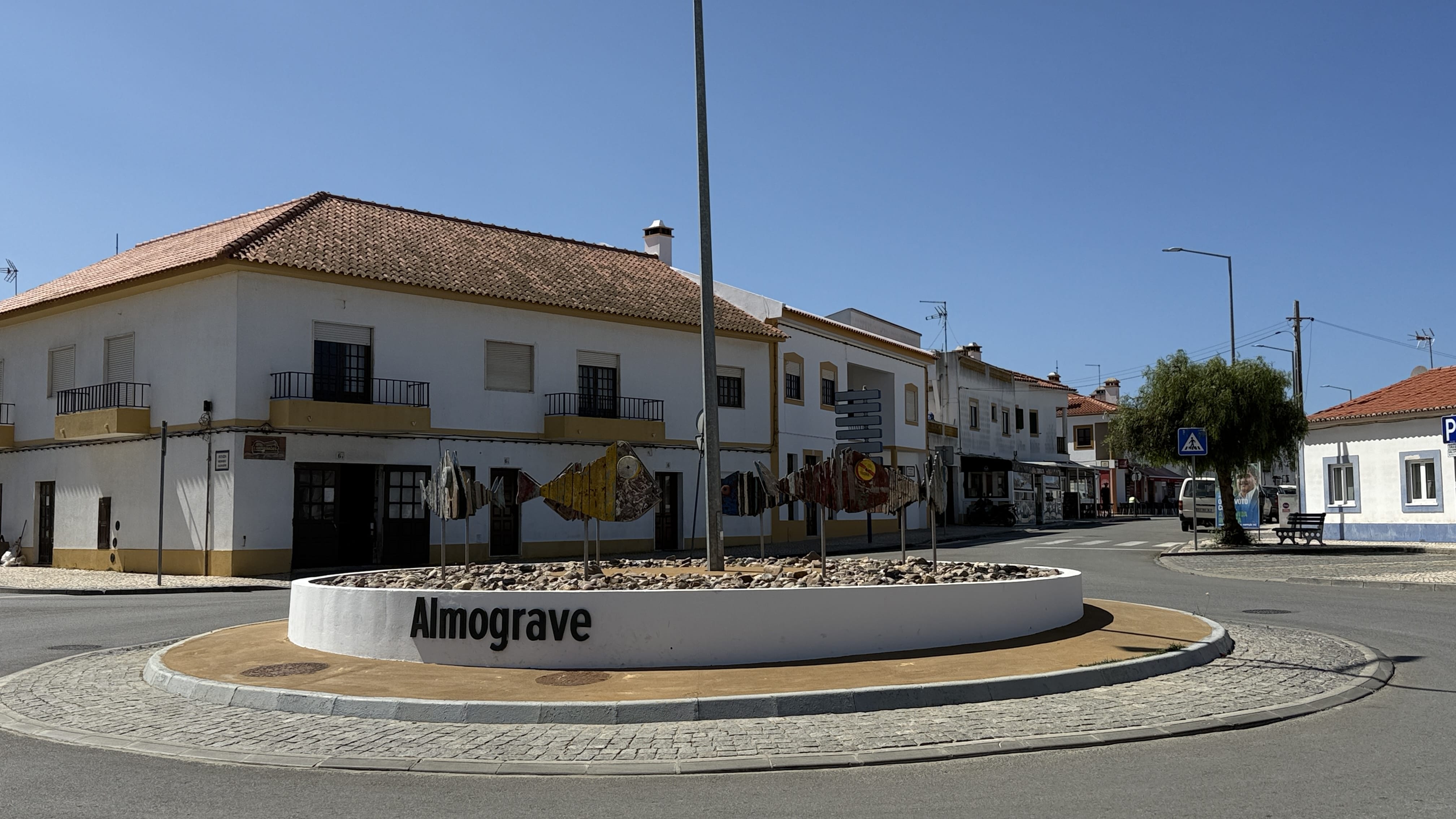
Before checking in at our hotel, we stopped for lunch at Restaurant O Lavrador. It was mostly a fish place—vegetarian options are scarce in these small towns—so I ended up with two fried eggs and fries. Simple, but fine, especially with a bottle of crisp white wine shared with the group. Eggs and wine…what could be better? We were about to order vinho verde again, but the waiter practically clutched his chest and said it was like a stab to his heart—that we should be drinking local Alentejo wine instead of a “green wine” from the north. Point taken.
We stayed the night at Vincentina Rooms by Casas do Alentejo. After checking in, I picked up a couple of postcards to mail, then wandered along some sandy trails nearby. Later I walked down to Praia de Almograve (Almograve Beach), a cliff-lined stretch of sand facing the Atlantic. The wind was whipping, but I eventually found a spot by the rocks that gave me some shelter and sat there for a while, just taking it all in.
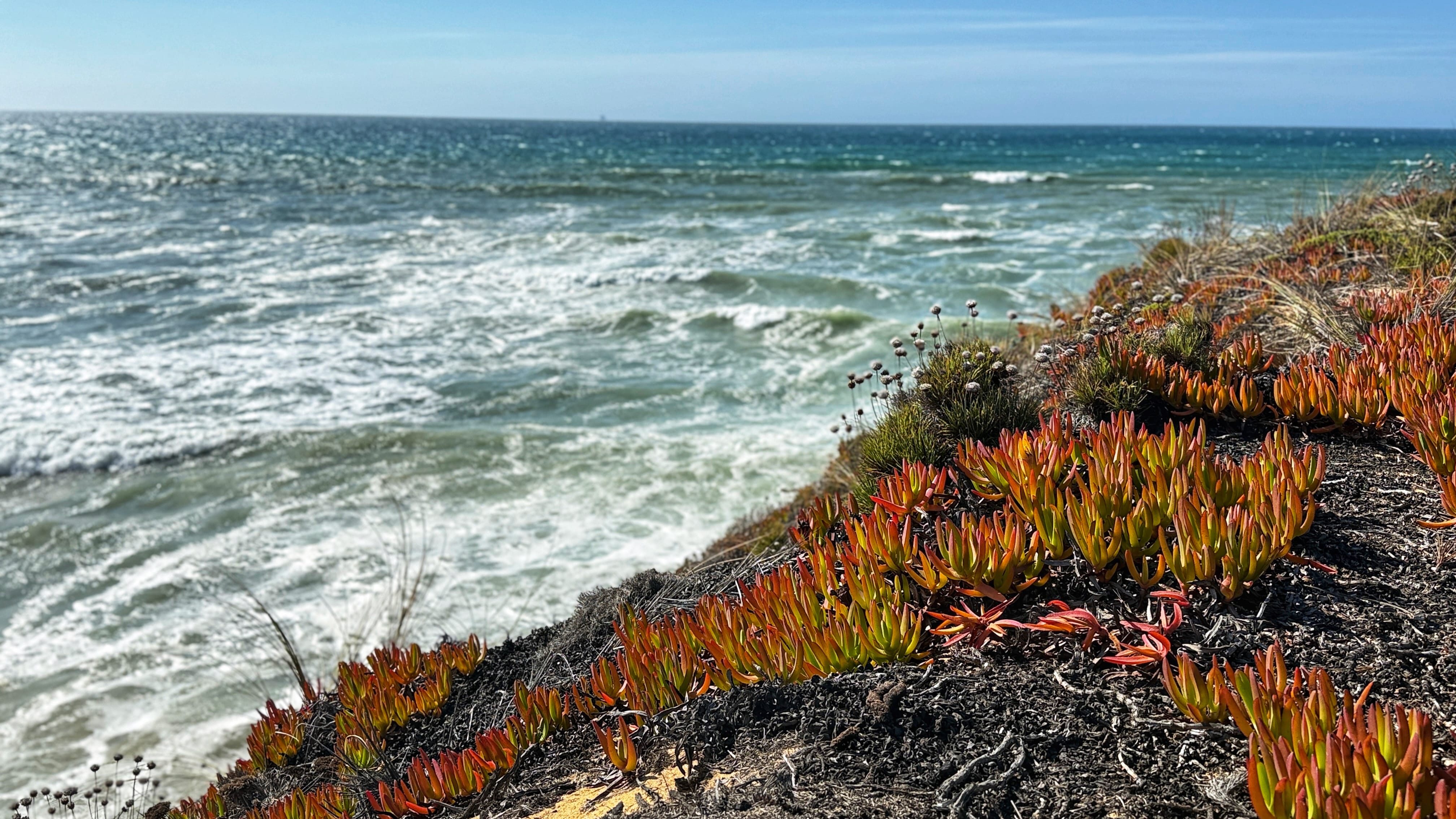
In the evening, I met one of the women from the group at Bar da Praia, a popular beach bar about a ten-minute walk from the hotel. The place was already packed, but she’d managed to find a couple of stools at the patio bar overlooking the ocean—perfect seats for the sunset. The sun had just started to set when I joined her. I ordered an Aperol spritz and a toasted tomato-and-cheese sandwich—simple but tasty. We lingered there, sipping cocktails and talking as the waves rolled in, staying until the last bit of sun disappeared before heading back.
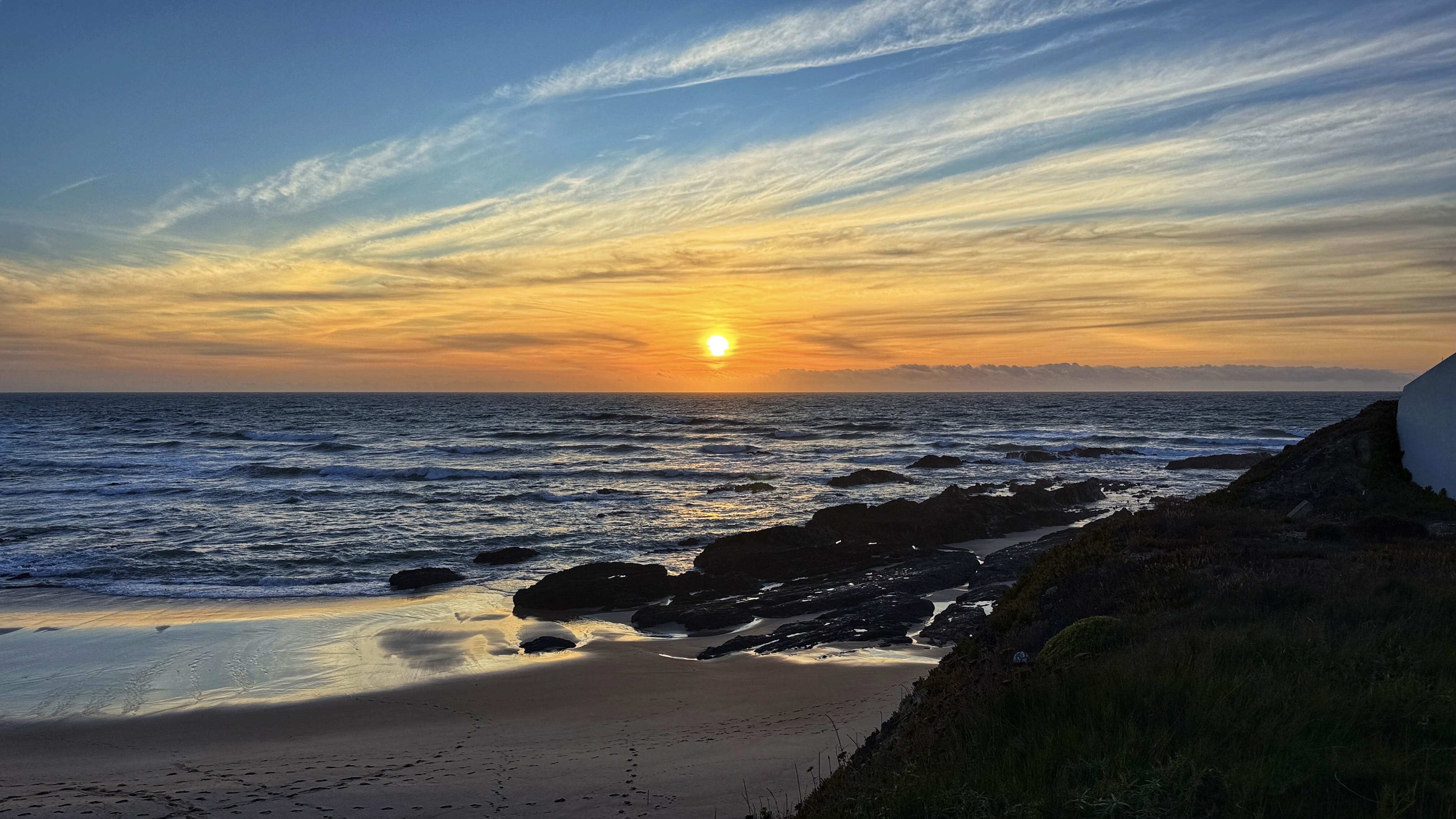
It really was a perfect evening, except that I was cold most of the time. That was the thing about hiking the coast—the days could be hot but breezy, and by late afternoon the wind often picked up, leaving me wishing I’d packed a warmer jacket once the sun went down.
This was one of my favorite days on the trail. The path climbed higher, and for long stretches we followed the dramatic cliffs. The Atlantic stretched endlessly below, waves hammering the rocks while seabirds hovered in the wind.
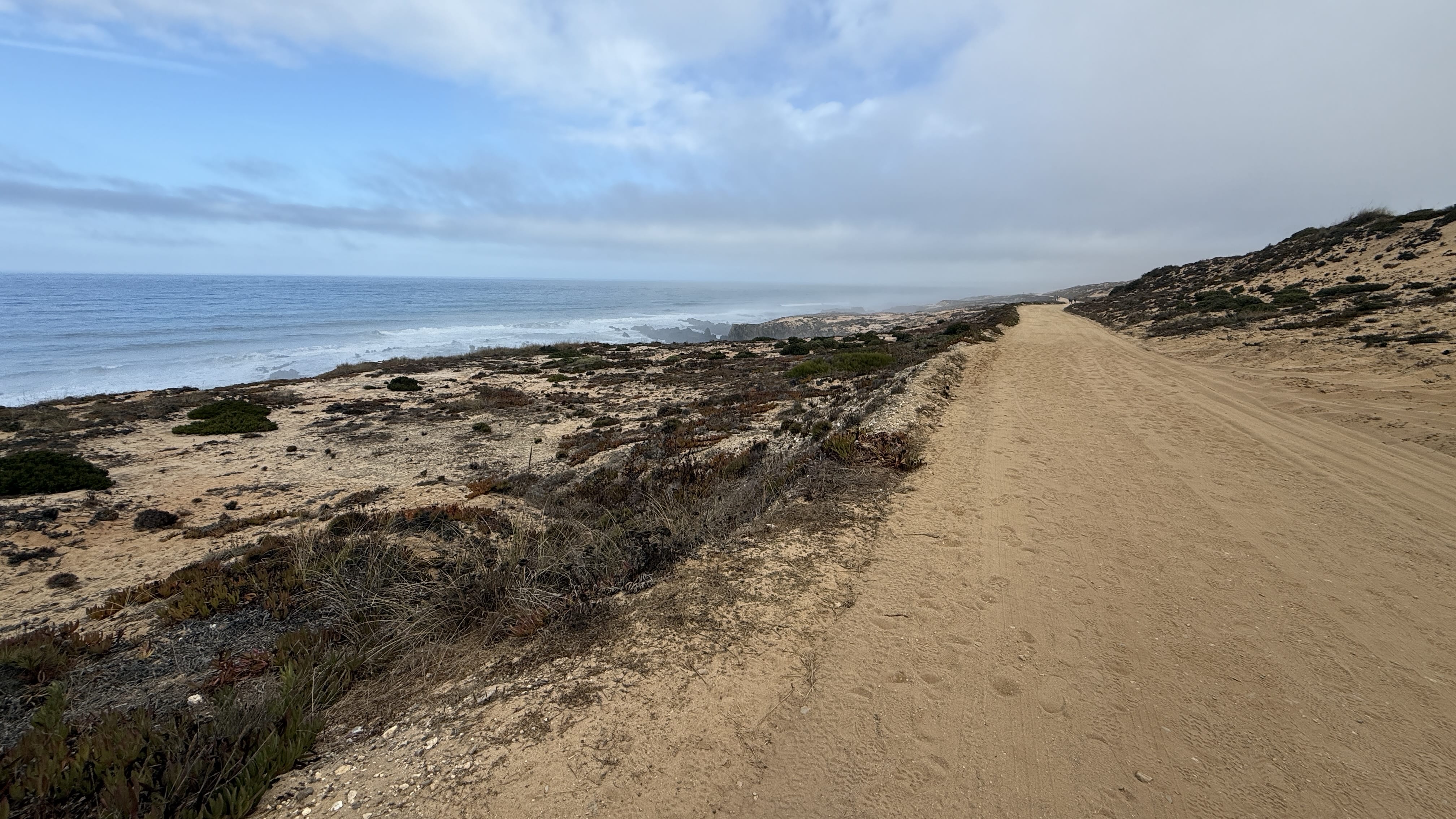
At times the trail dipped into coves before climbing back up again. In between were patches of forest that gave a bit of shade before emptying us back out onto open sandy tracks.
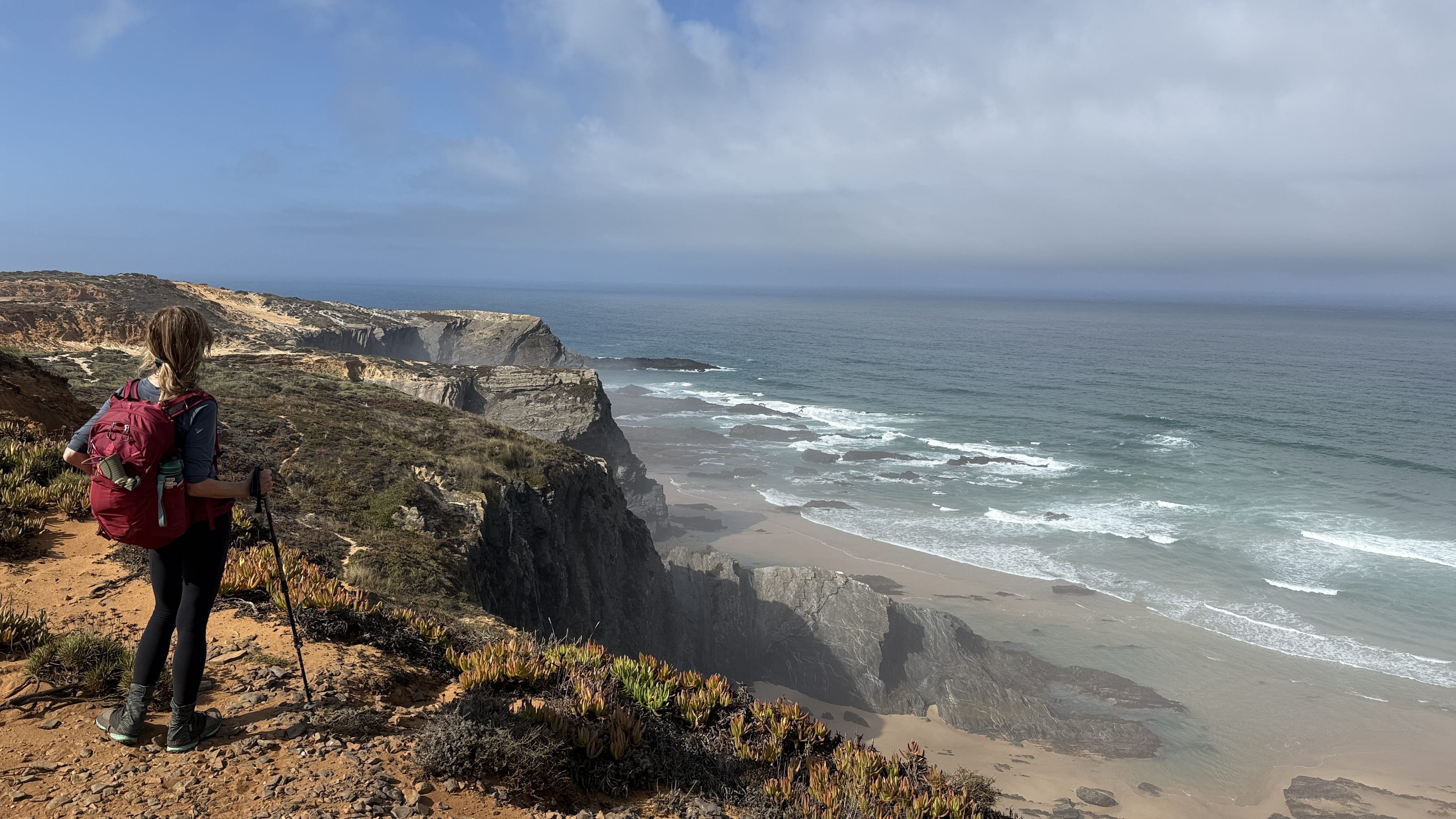
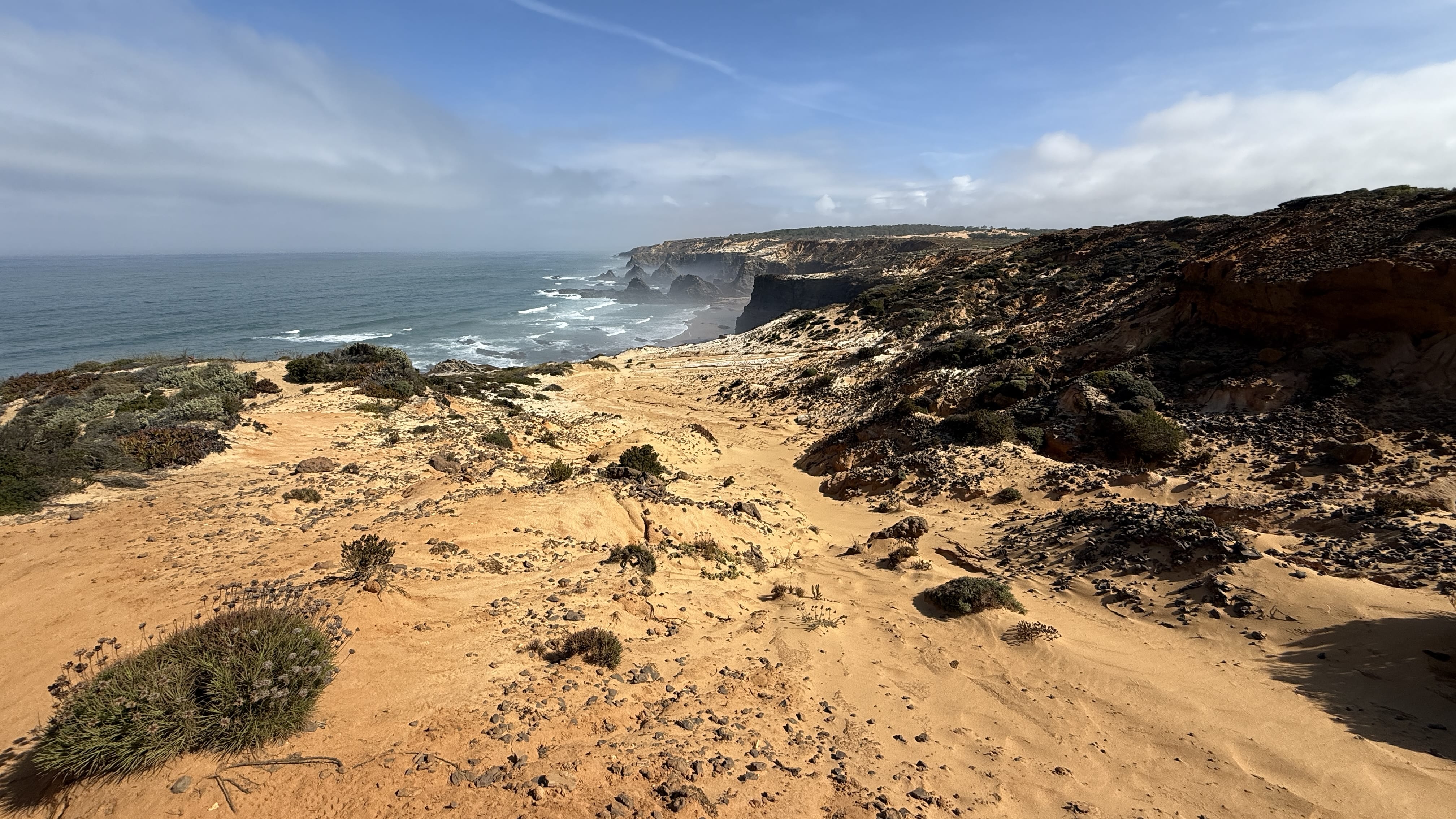
By midday we reached Cavaleiro, where we stopped at popular little place —Snack Bar Adélia for drinks and a quick lunch. Back on the trail, we passed a stretch where sour fig spread across the cliffs in a thick red-and-green carpet.
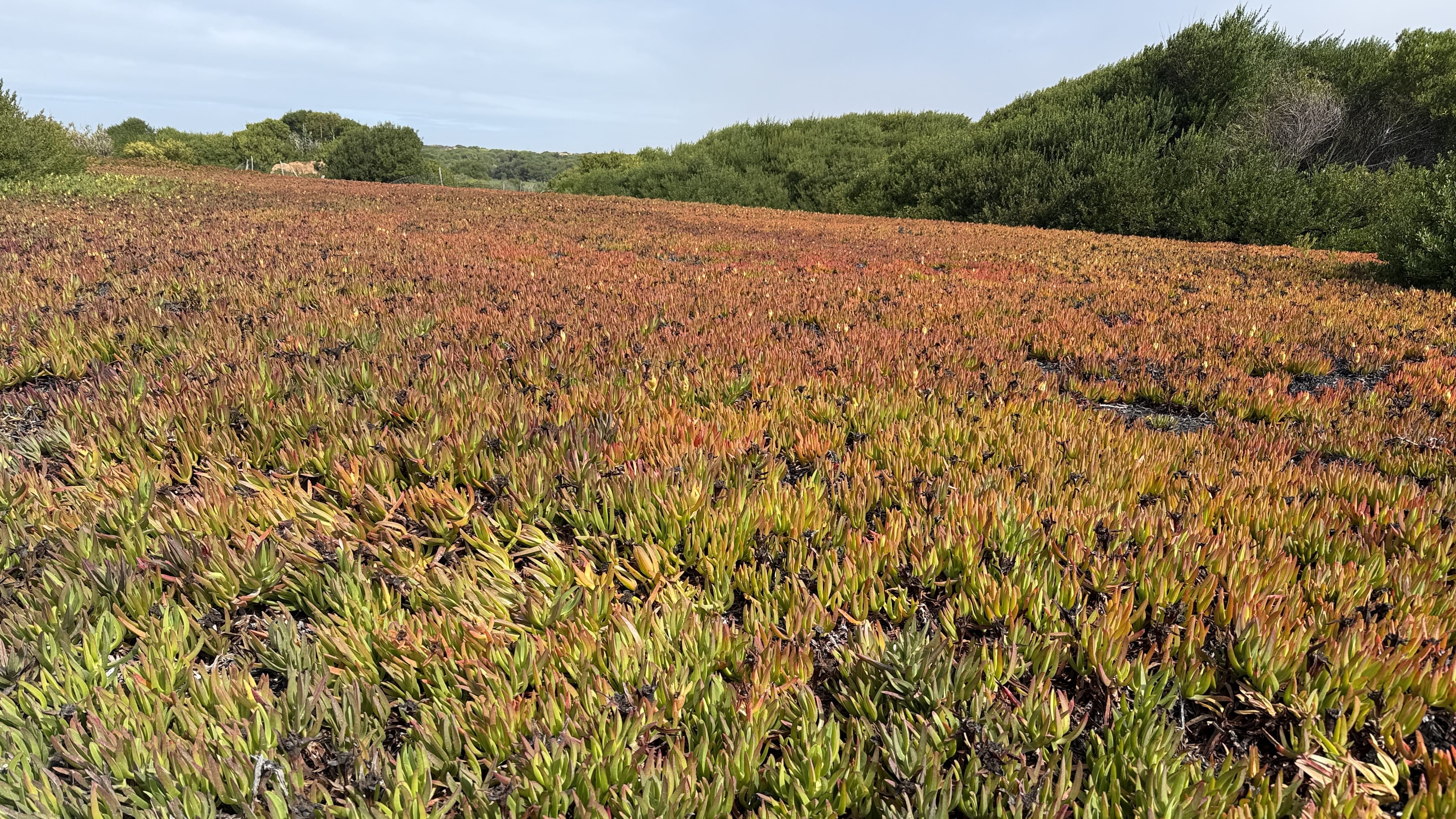
Soon after we reached Farol do Cabo Sardão (Cape Sardão Lighthouse). The tower is unusual—built beside the keeper’s house instead of on top—and the cliffs nearby are famous for white storks nesting on the sea stacks, the only place in the world where they do. From there the trail passed more beaches and a small cluster of fishing boats pulled up near the sand.
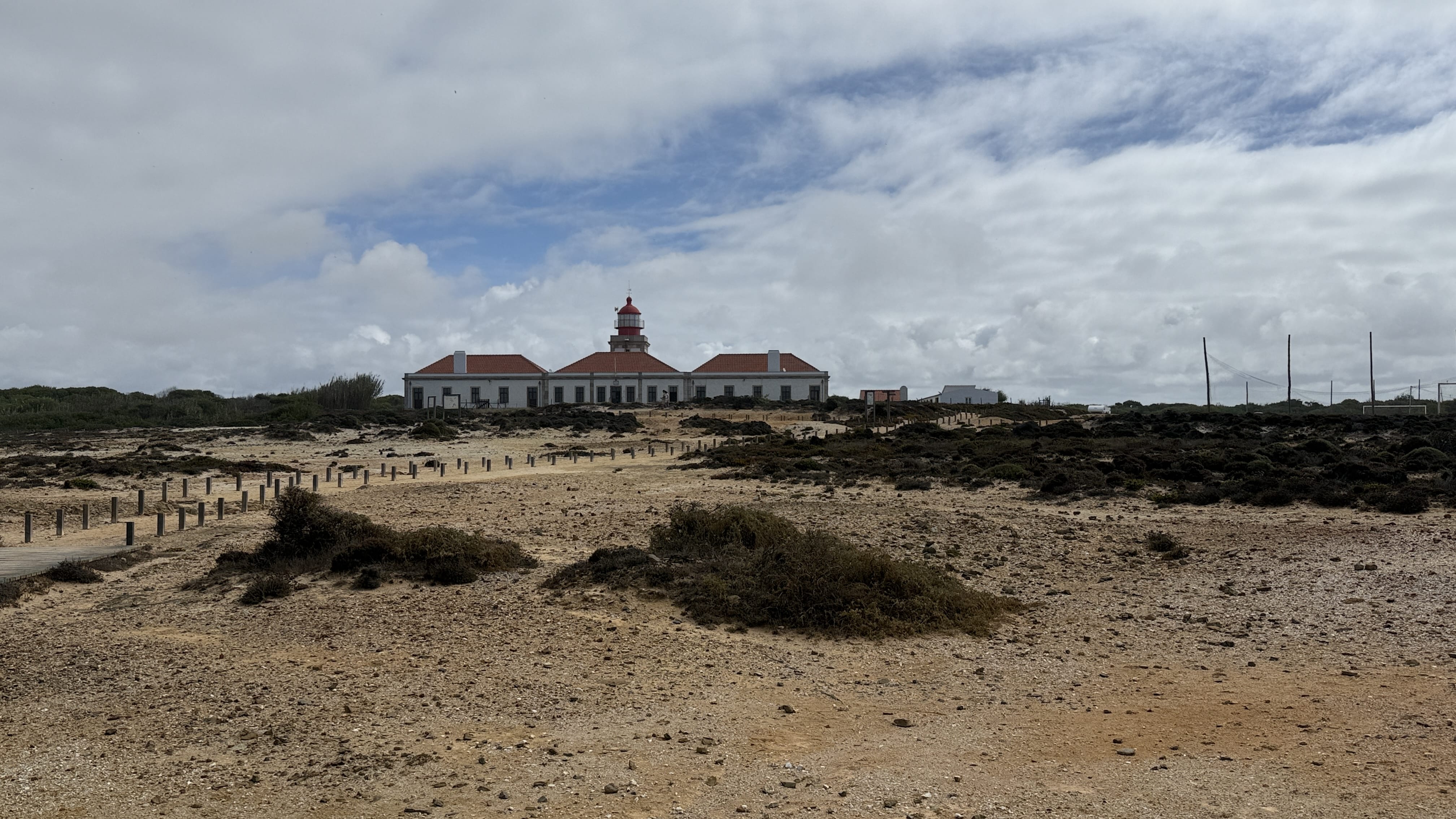
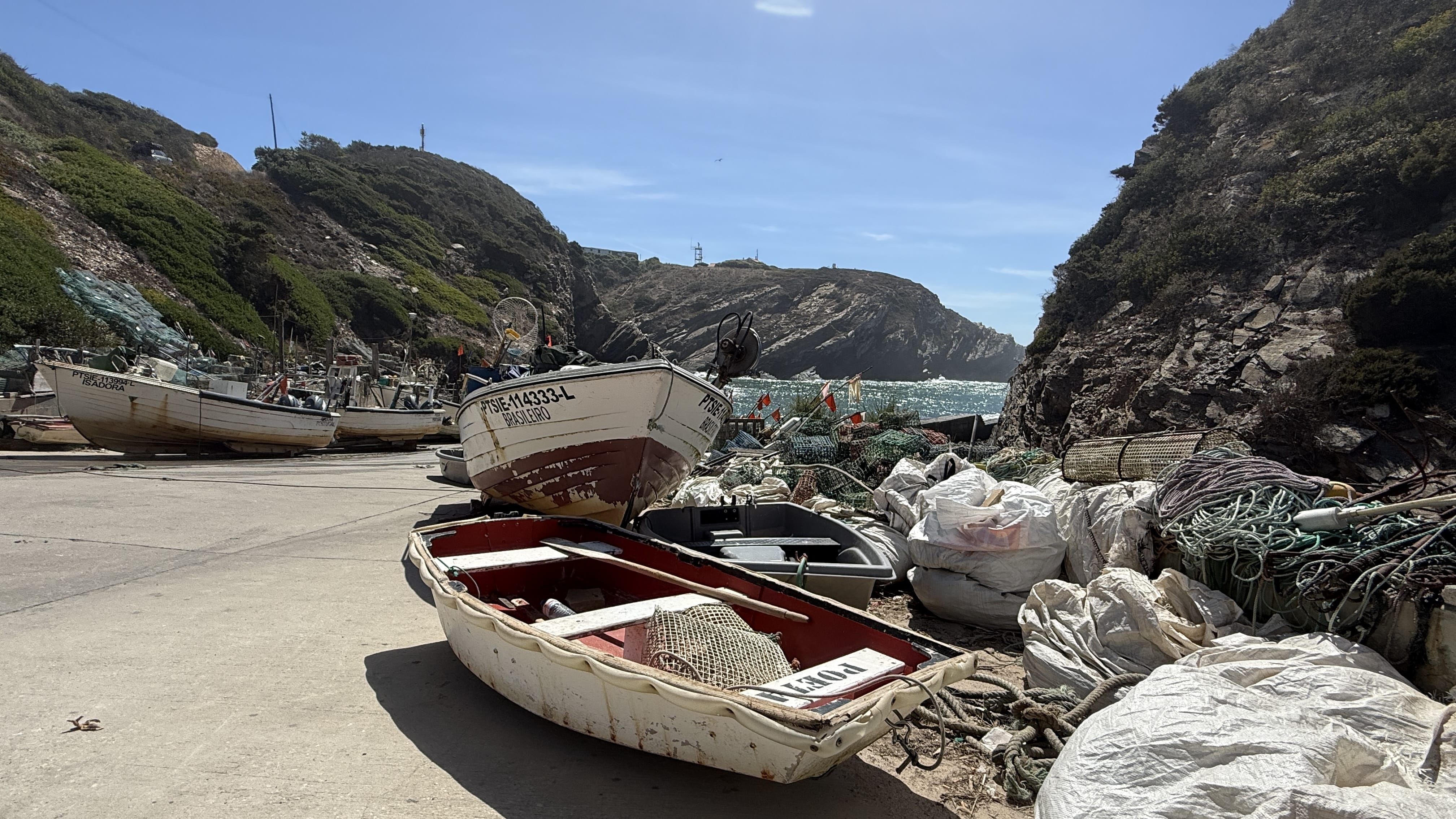
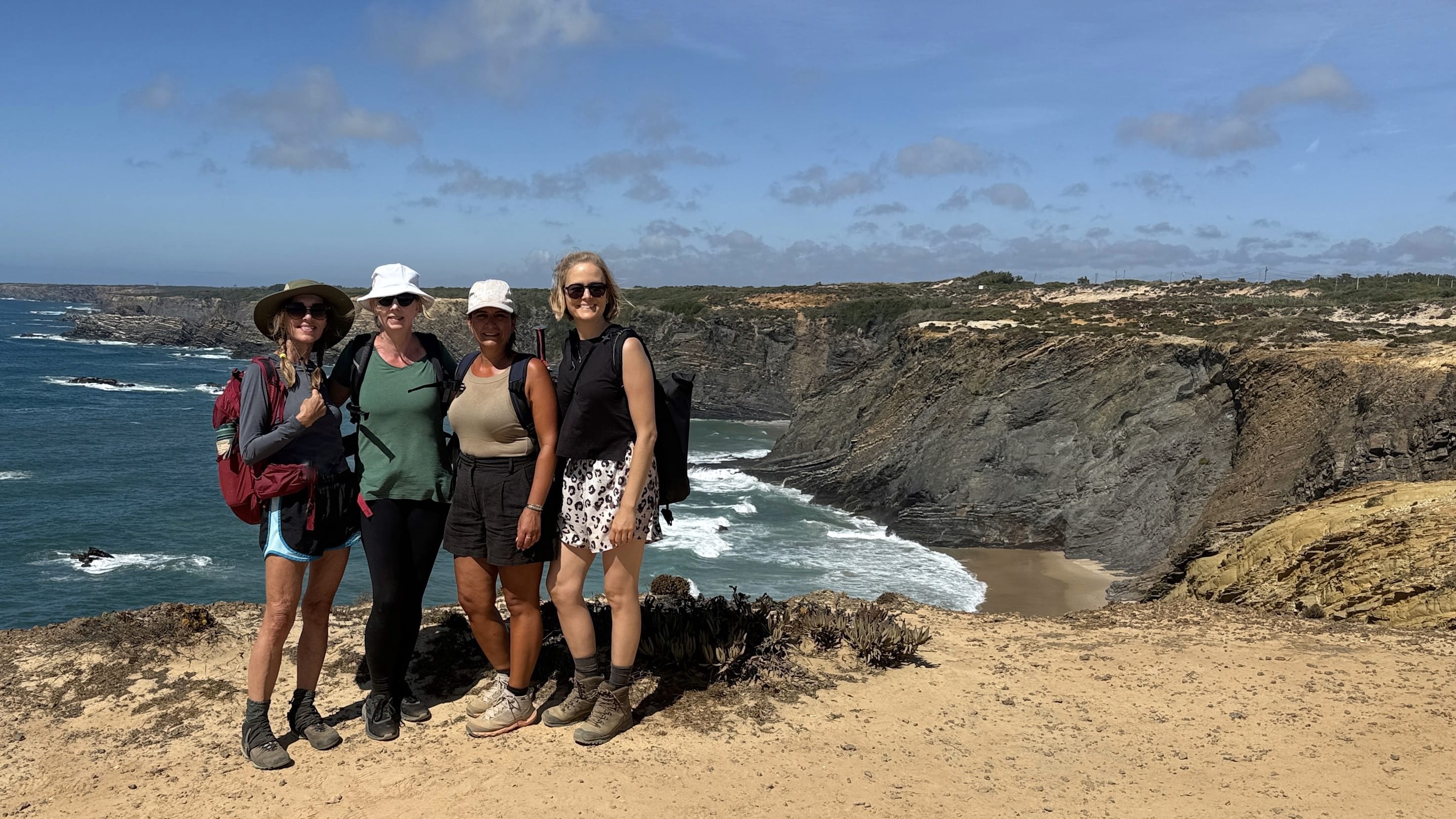
By late afternoon we reached Zambujeira do Mar and checked into Casa da Praia. Later I walked to the Capela de Nossa Senhora do Mar (Chapel of Our Lady of the Sea), a small, whitewashed church overlooking the cliffs. The view stretched across the Atlantic and down to the beach below—what a perfect spot.
I also wandered along a few clifftop paths that gave me a look back over where I’d just hiked and ahead to where I’d be going next.
That night, at our guide’s recommendation, we had dinner at Restaurante Costa Alentejana. I ordered a veggie burger while my fellow hikers went for fresh fish. The place was packed and clearly popular, mostly with tourists. Many tables had gone for the house specialty: a huge boat-shaped platter piled with grilled seafood—whole fish, shrimp, clams, squid—the works.
After dinner I strolled through town—past cafés, shops, and souvenir stands—grabbed a gelato, and finally called it a night.
This was another long day on the trail—and the one with the most elevation change. We left Zambujeira do Mar in the morning and followed the path along the cliffs, which gave us some of the most dramatic coastal scenery of the trip.
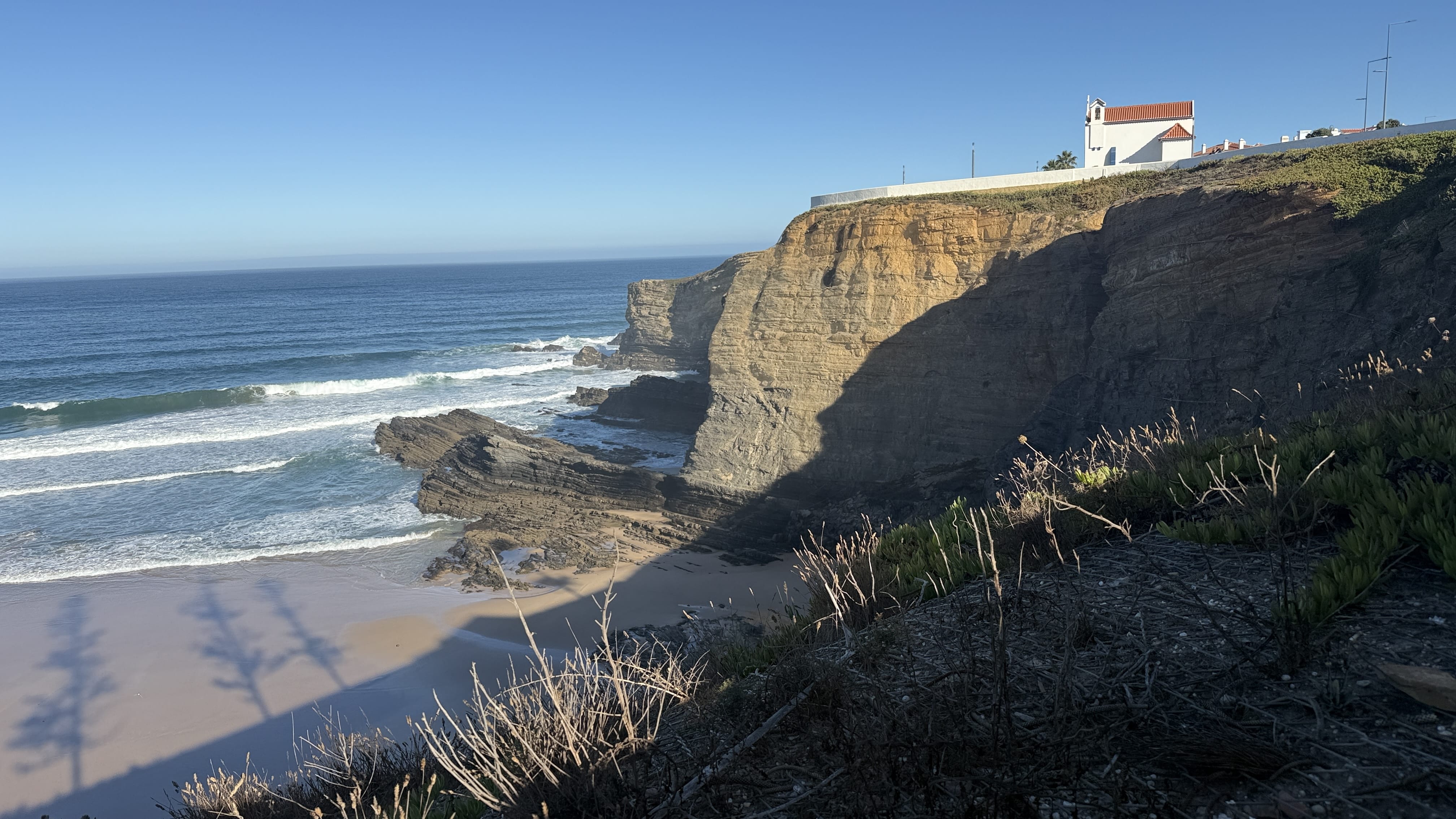
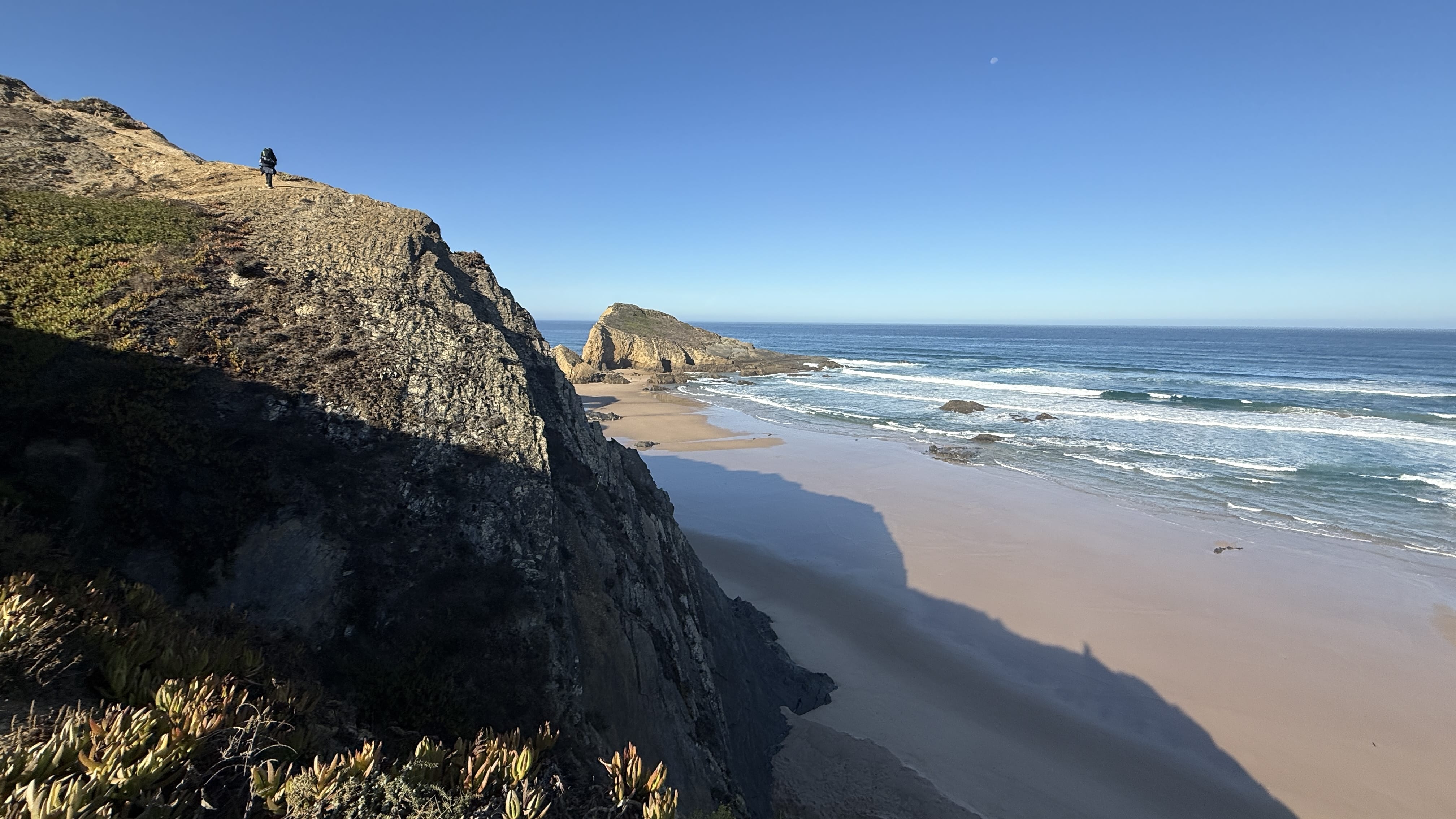
The trail passed one beautiful beach after another: Alteirinhos, Carvalhal, Machados, and Amália. In between, the path wound across dunes and scrub. The coast was gorgeous as always, but each day felt different—the weather, the light, the color of the water. It never got old.
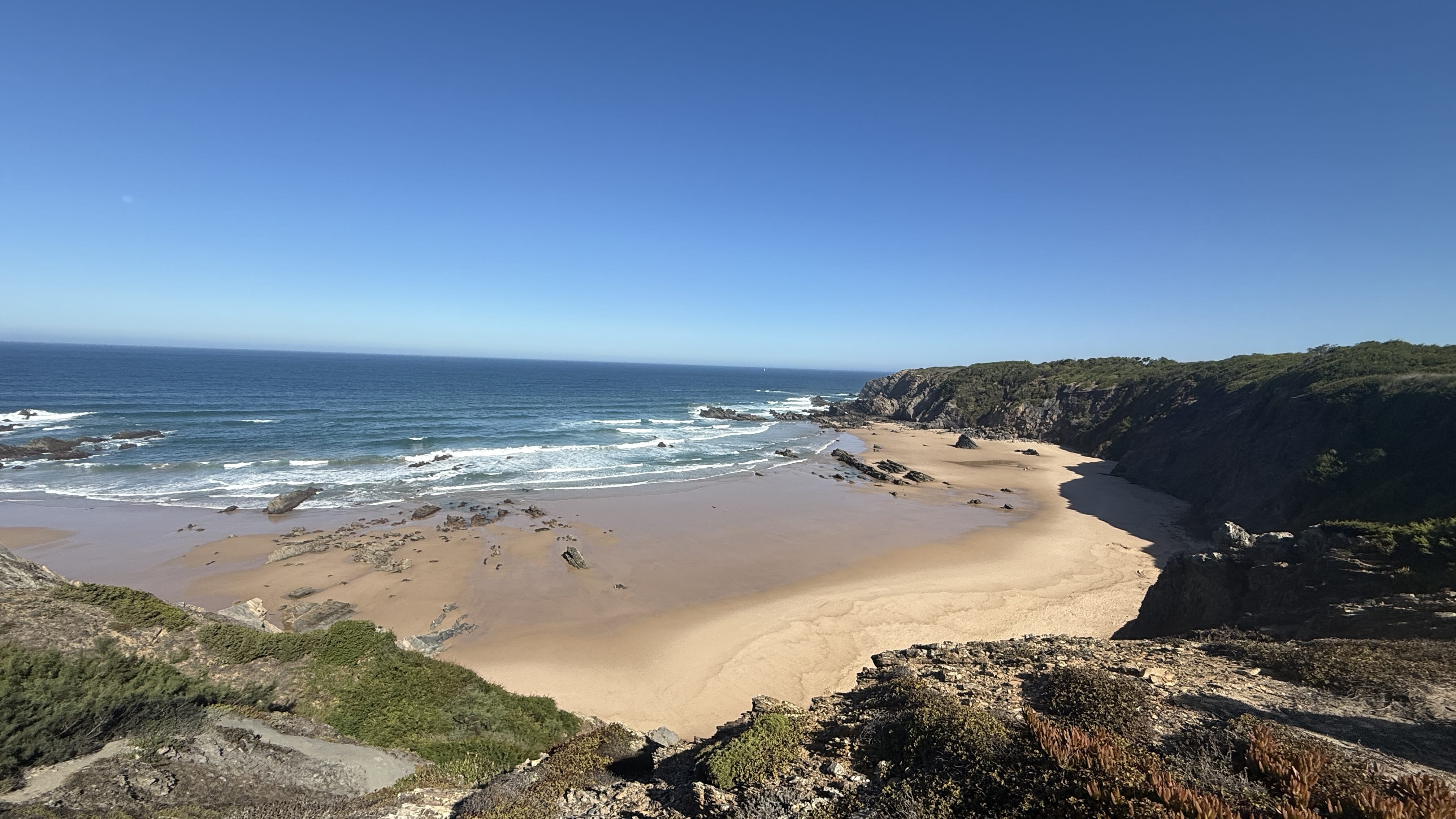
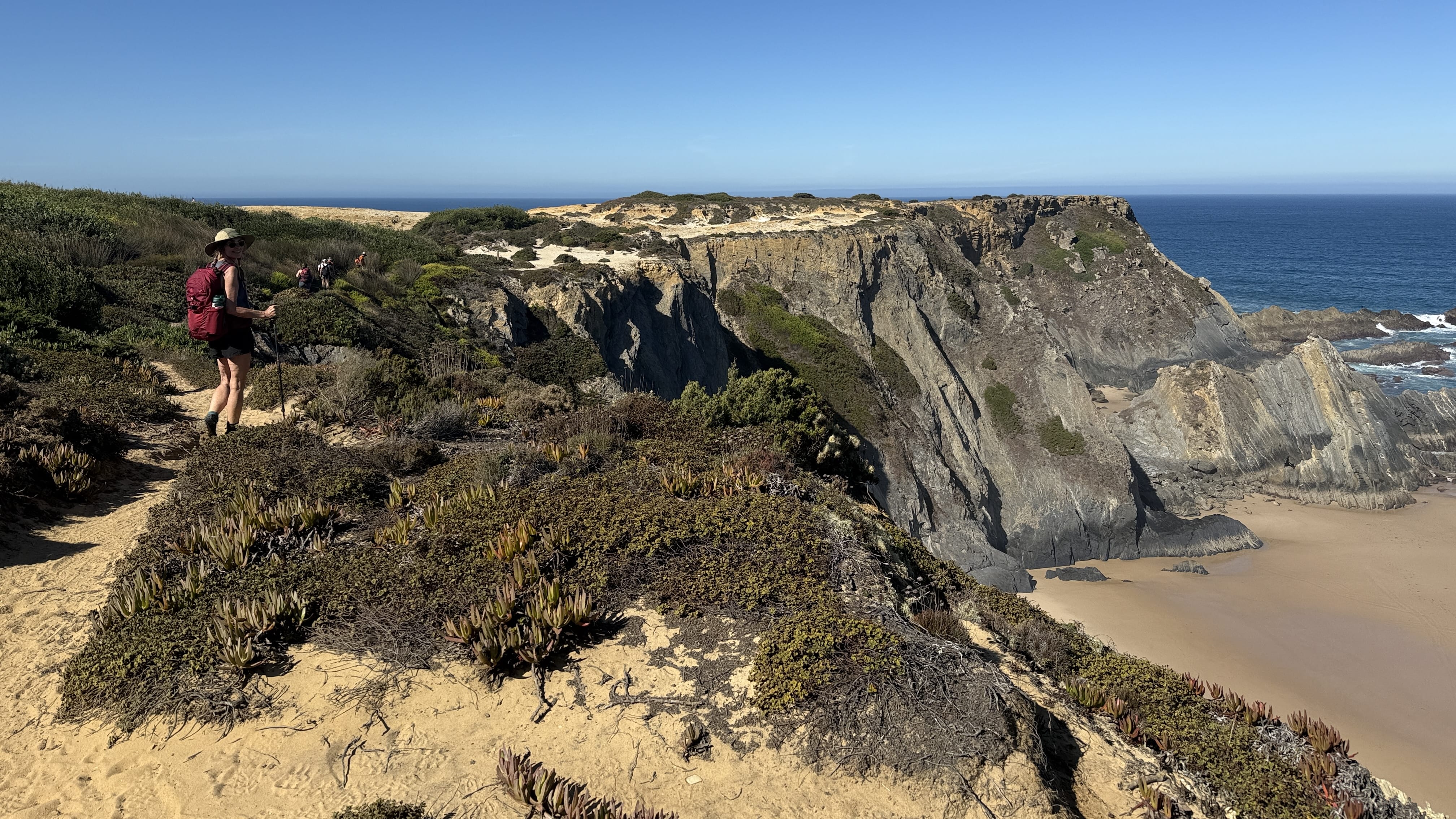
At one point the trail dropped steeply down a rocky section. A woman ahead slipped, and the path bottlenecked while everyone waited to get through. Most people were patient, except for one guy who shoved past like we were standing around for fun. It pissed me off, but what can you do? Assholes are everywhere.
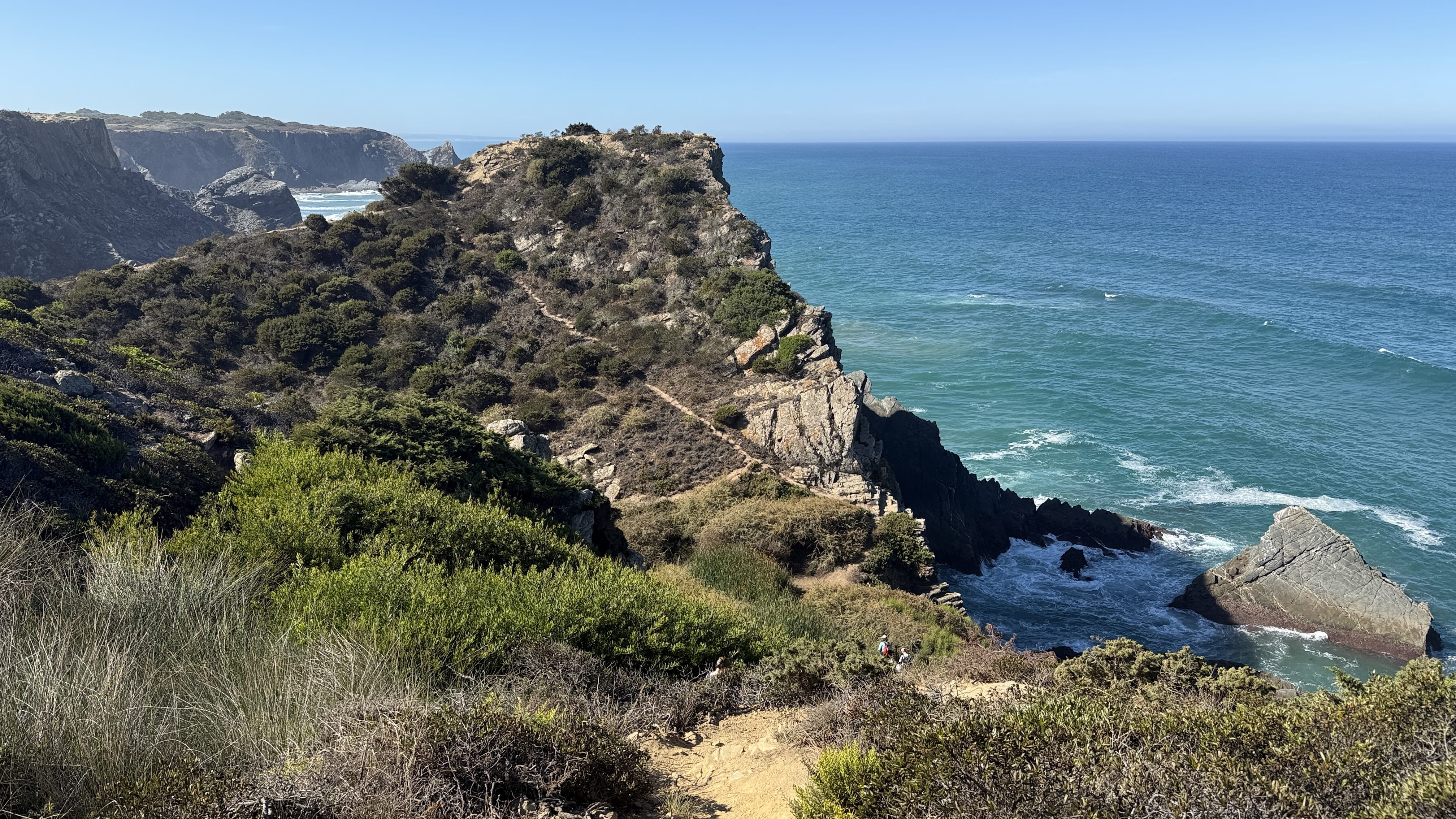
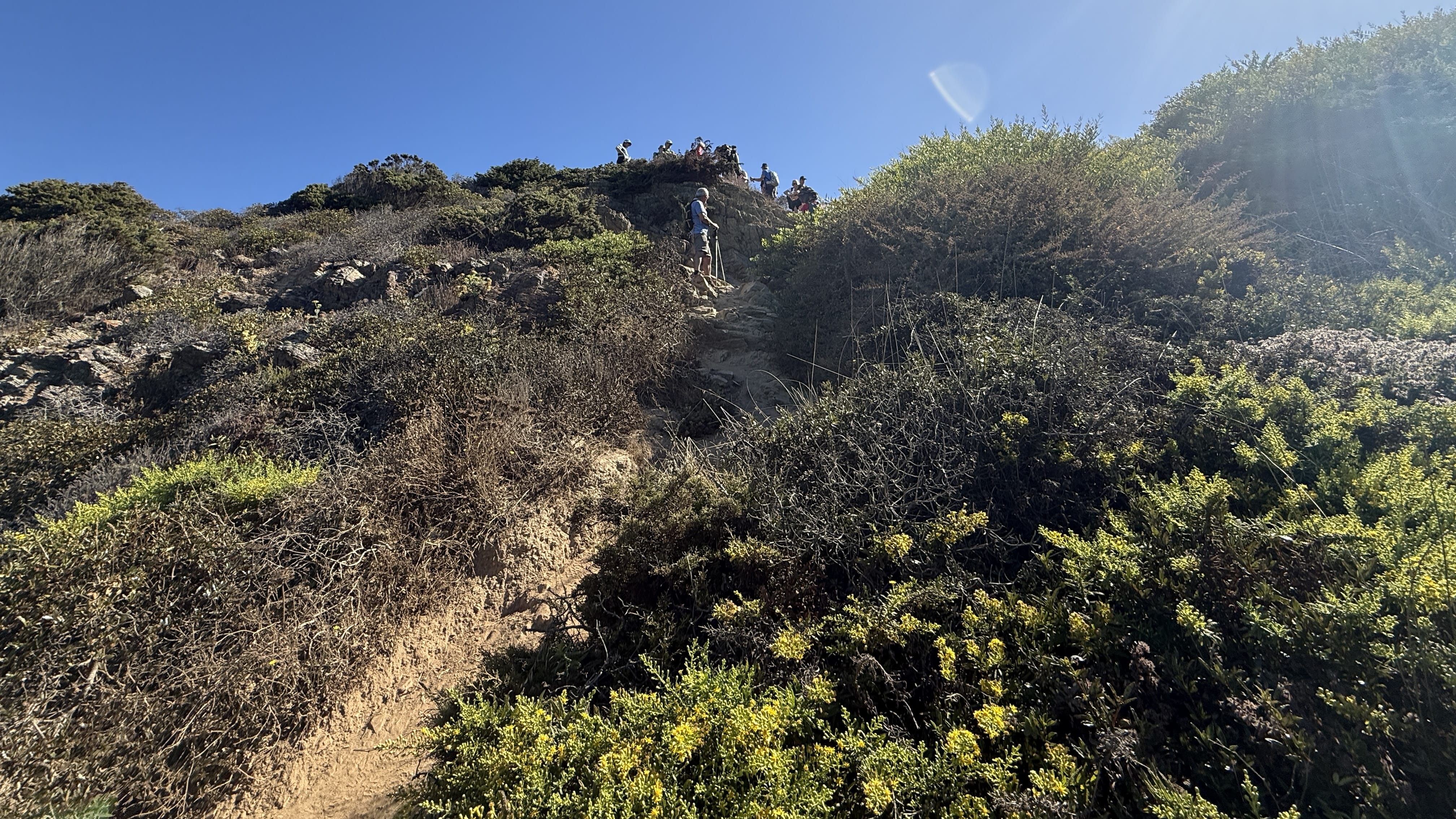
The rest of the day had that same mix—ups and downs, rocky scrambles, stretches of sand. You had to watch your footing, but I liked it. It added variety to the day, and even though there was plenty of climbing, it was gradual and manageable.
We wound through a patch of forest that gave us a bit of shade before spitting us back out onto the cliffs.
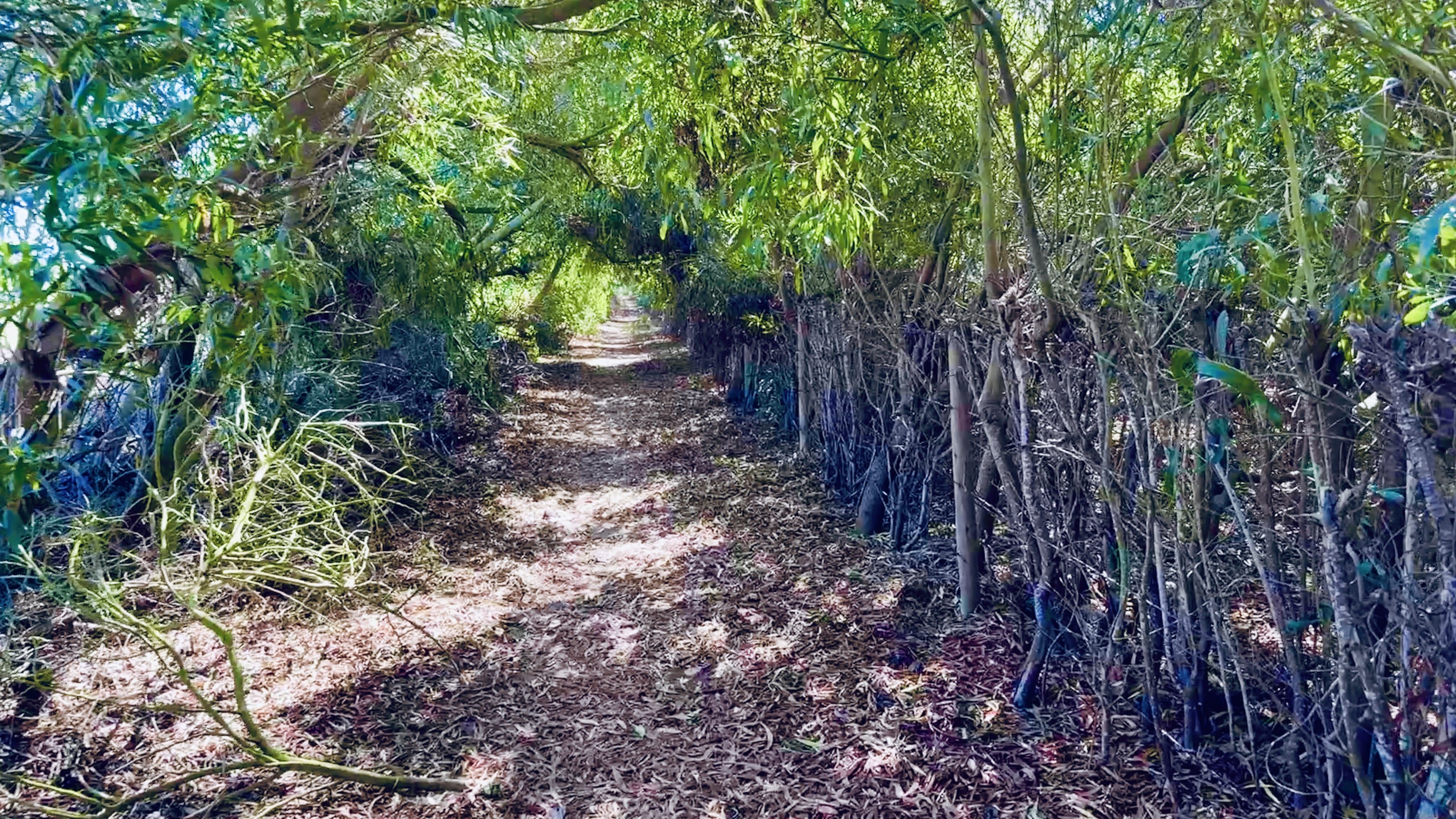
We passed Praia da Amália (Beach Amália), once the seaside retreat of Portugal’s famous fado singer Amália Rodrigues, then more hidden coves and beaches. Near Azenha do Mar we came across a tiny fishing harbor, then trudged across sandy dunes. By midday the sun was blazing—it was the hottest day yet, with almost no shade. I was very thankful for my hat.
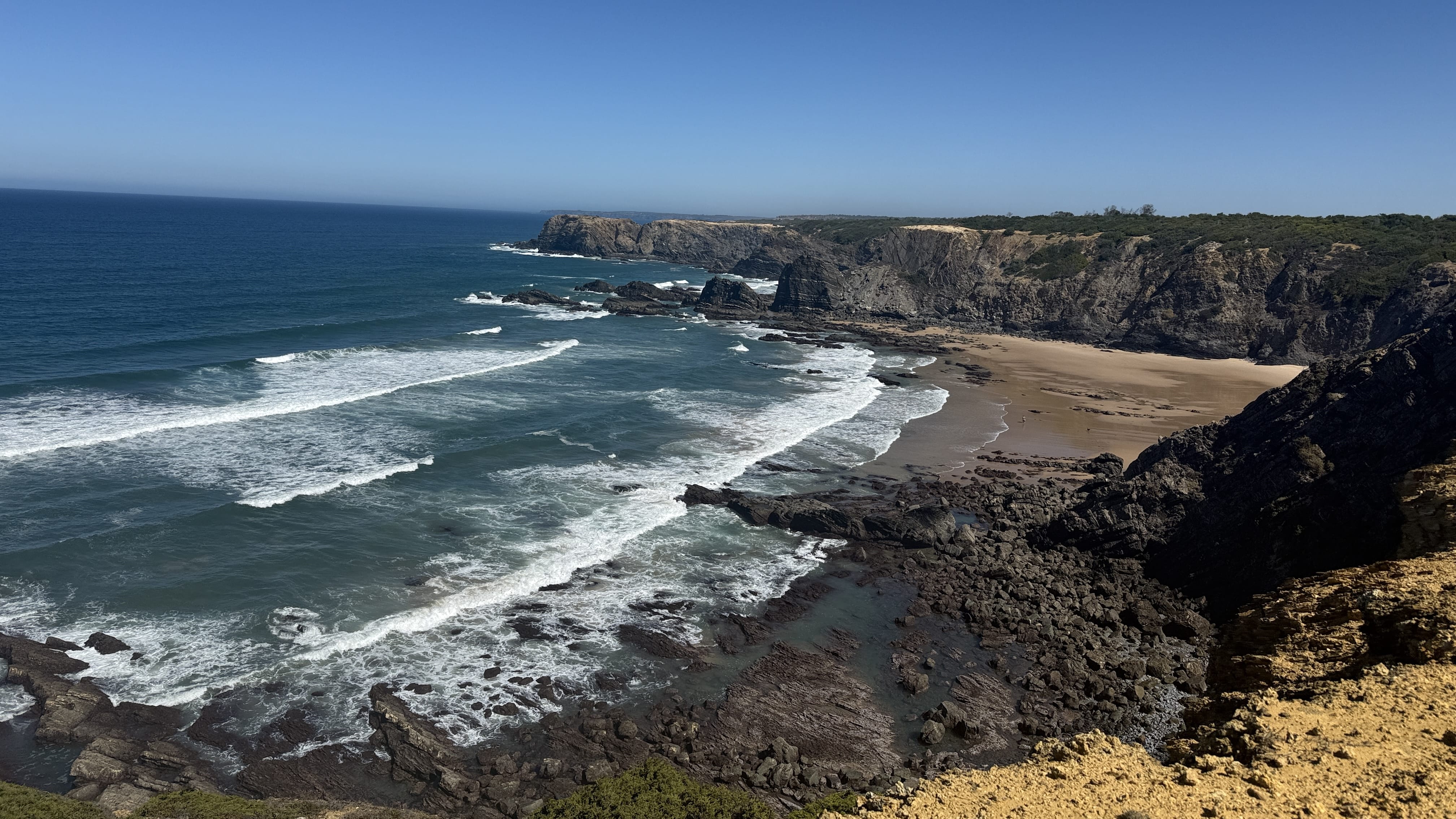
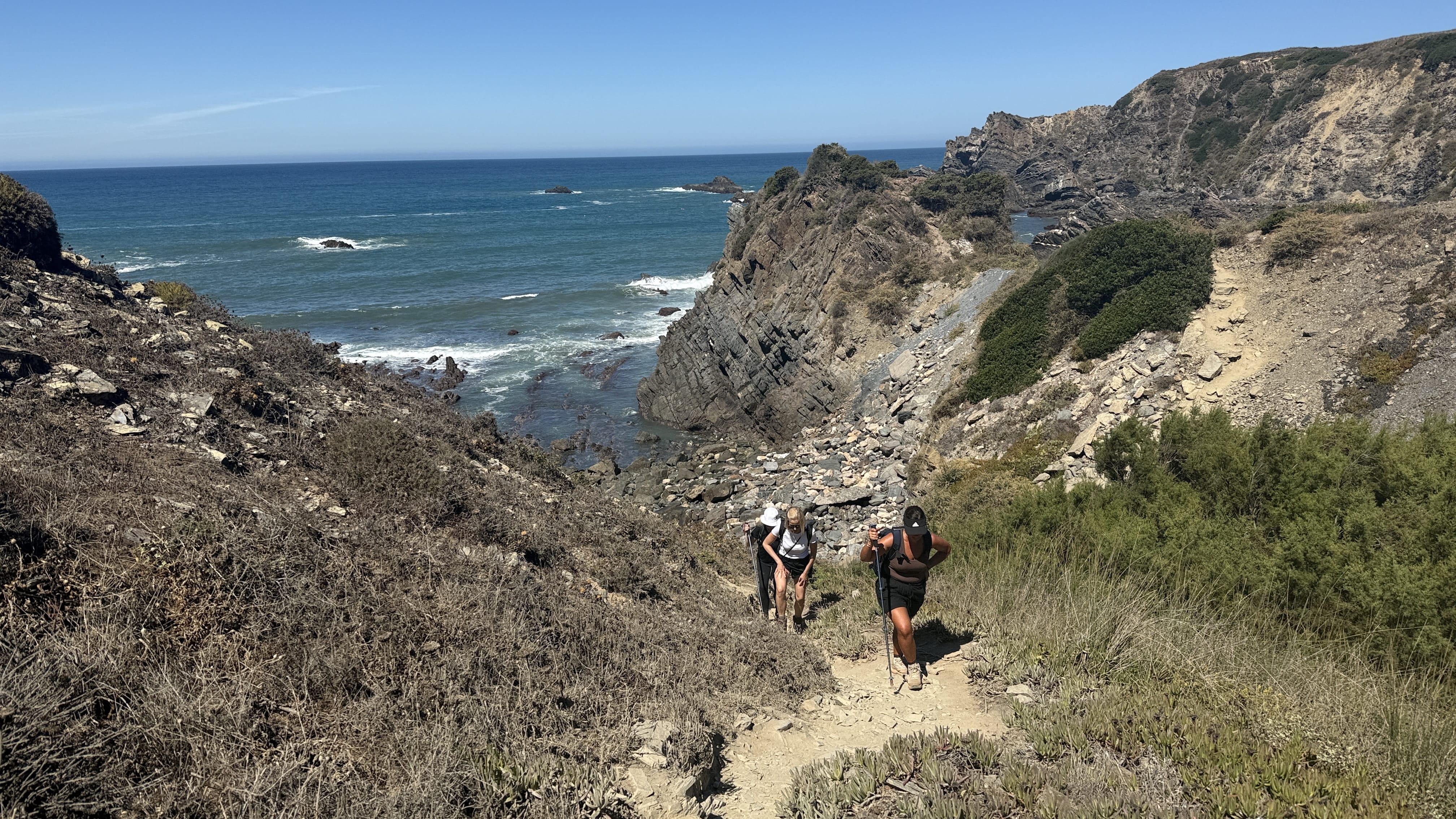
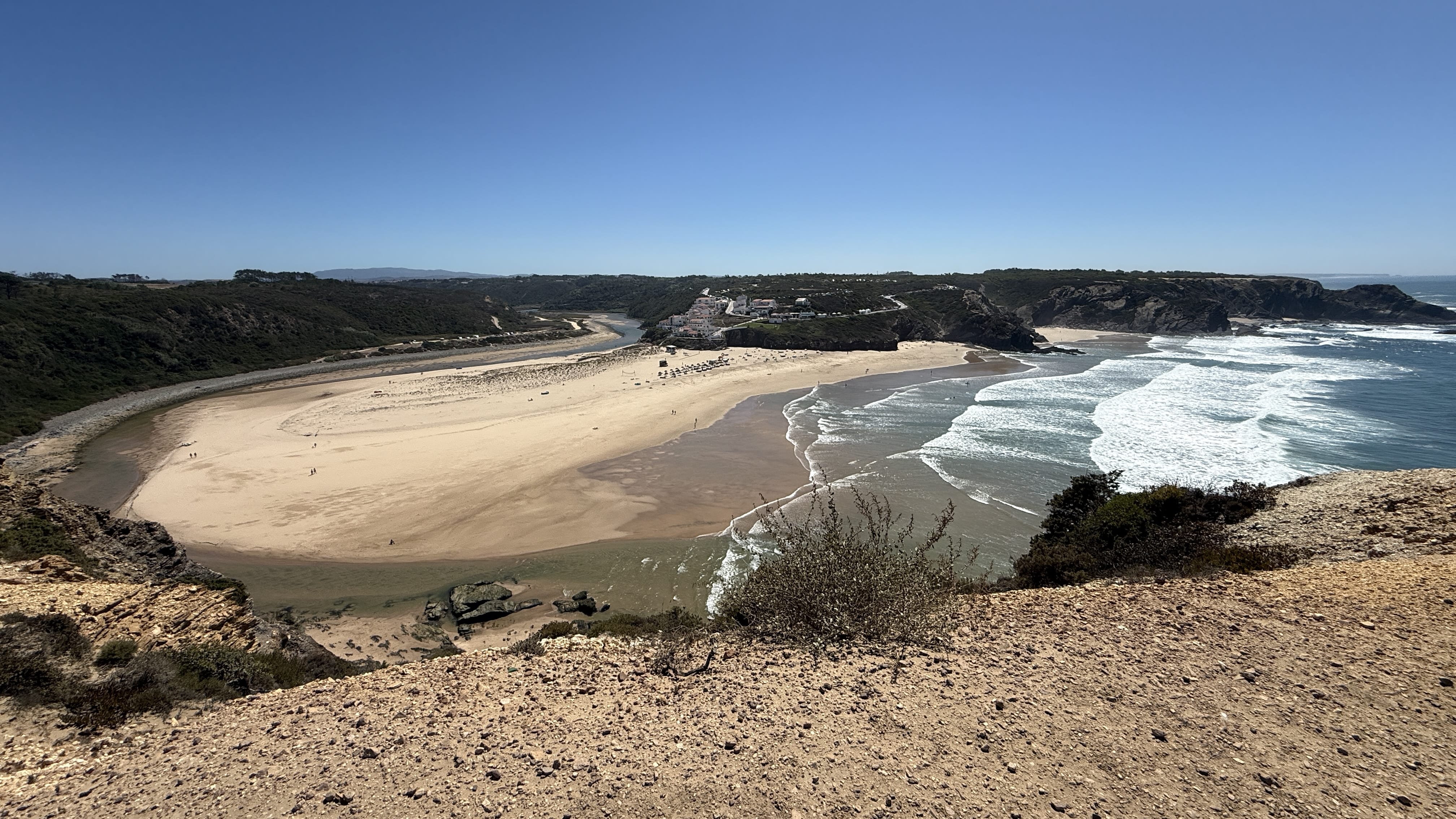
Eventually we reached Praia de Odeceixe, where the Seixe River meets the Atlantic. With the tide out, we made a quick detour across the river to step onto the beach. Shoes off, feet in the ocean—it felt incredible after so many miles. We had about forty minutes to relax before crossing back and continuing to the bridge, making it over the Seixe before the water rose too high.
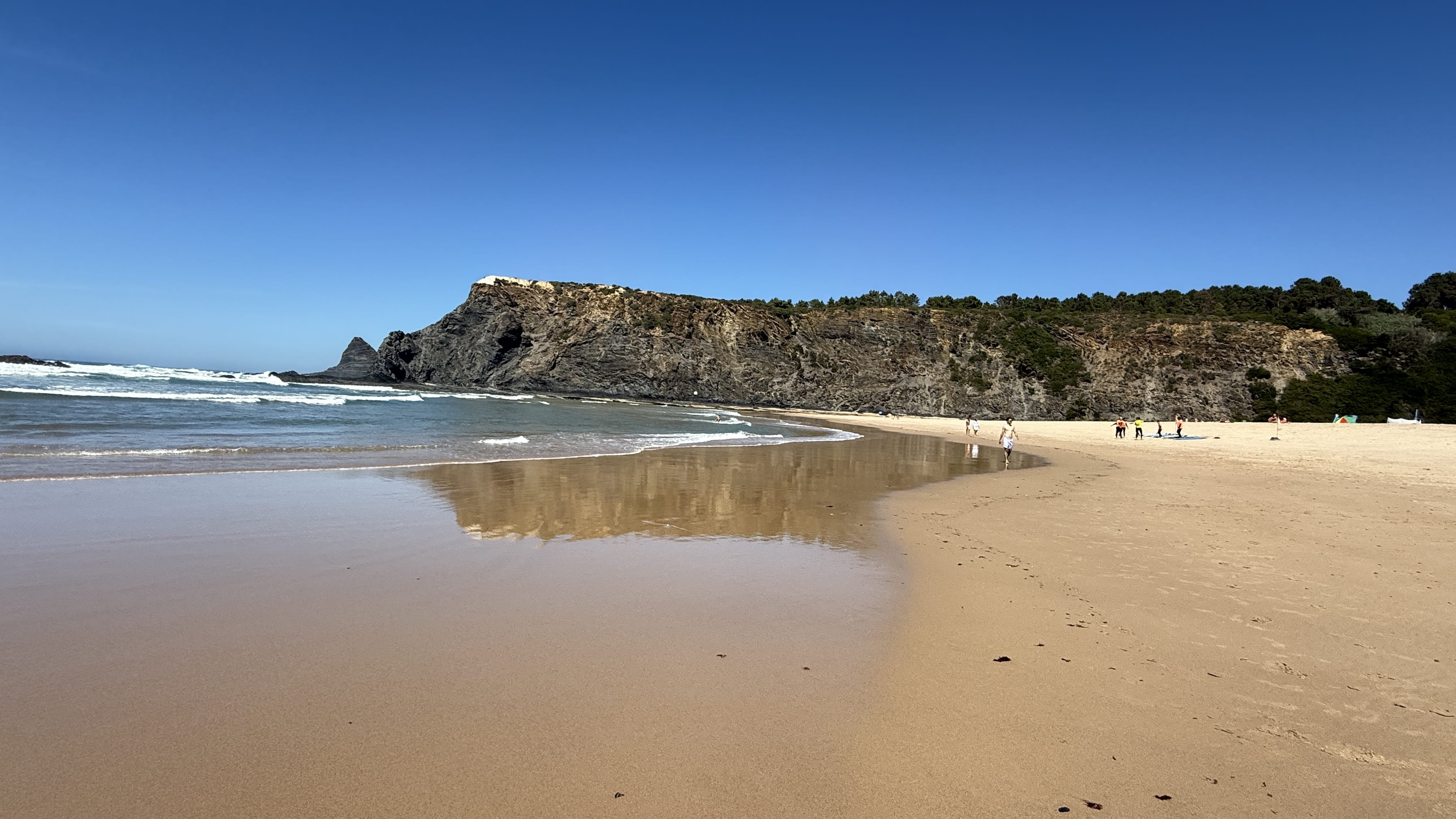
Another mile brought us into Odeceixe, where we crossed the bridge and waited about thirty minutes at a bus stop for our van. The itinerary bypassed the long section of the Fishermen’s Trail between Odeceixe and Vila do Bispo, so we headed to Aljezur for two nights before picking up the trail again in Vila do Bispo on our final hiking day.
We checked into Guesthouse A Lareira in Aljezur—our least charming stop of the trip. The upside of a two-night stay was that I could finally wash some clothes and hang them out to dry.
Dinner that night was at a tiny place called The Hummus Kitchen—cash only, barely any seating, but very good. Afterward we walked a few doors up to CERA – Bistro & Bar on Rua 29 de Agosto and split a bottle of wine before calling it a night.
If I’m honest, I didn’t really want a rest day. I was here to hike, and I would’ve preferred six full days on the trail instead of five. But the itinerary was what it was, so I made the most of it. I could’ve grabbed an Uber to one of the beaches about twenty minutes away, but I decided against it. I figured I’d just explore Aljezur instead, stay out of the sun, and besides—I wasn’t sure if there’d be umbrellas to rent
The town is split in two by the Ribeira de Aljezur (River of Aljezur): the historic old town on one side, the newer section on the other. We were staying in the new part, but I spent the morning wandering the old streets. I climbed up to the ruins of Aljezur Castle, founded by the Moors in the 10th century.
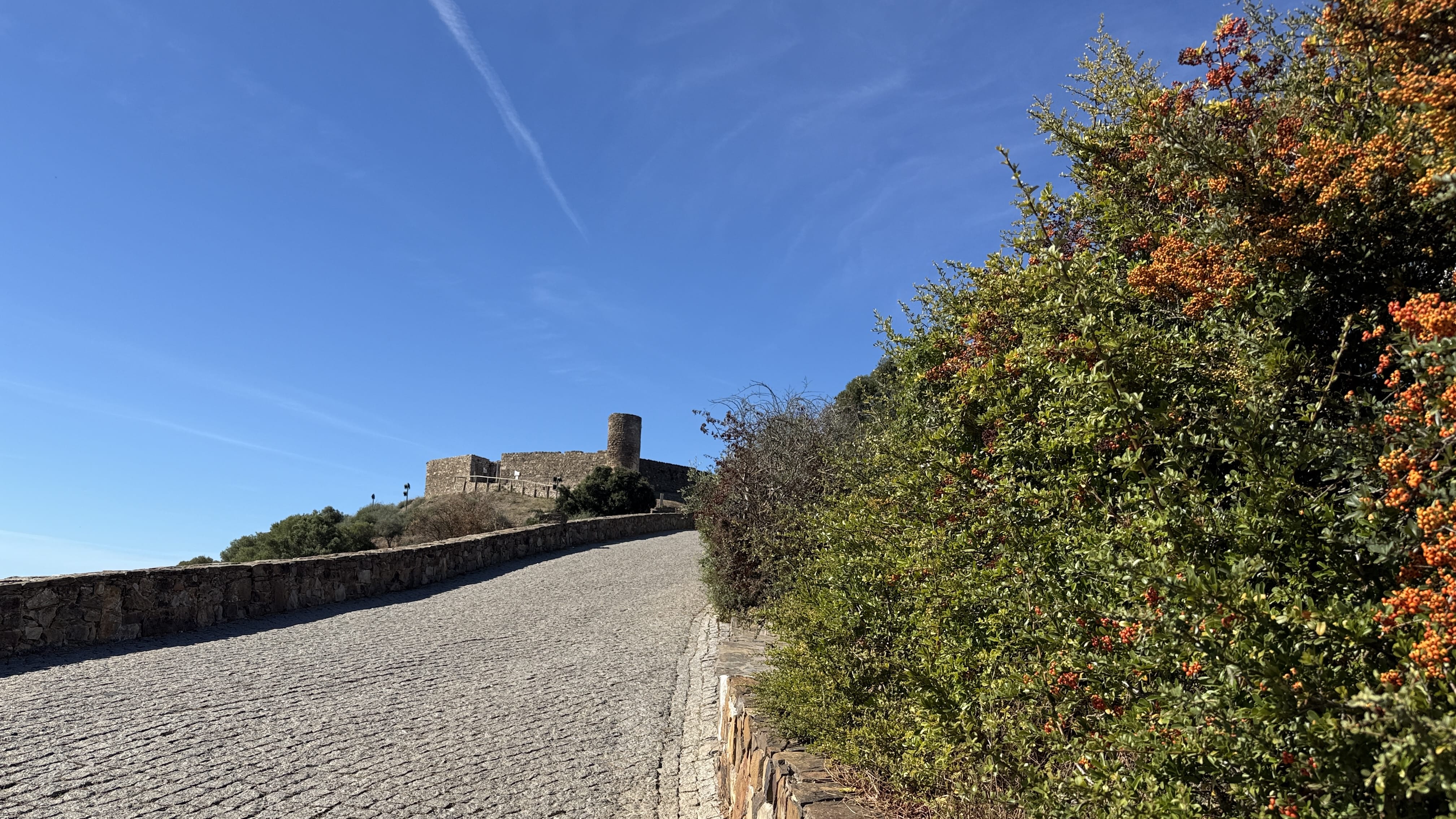
There isn’t much left besides a wall and a tower, but the views were nice. The fields below are famous for their sweet potatoes— a local specialty that seems to appear on every menu in town.
From there I wound back down through narrow lanes, passing the Igreja da Misericórdia (Church of Mercy) and the Igreja Matriz de Nossa Senhora da Alva (Parish Church of Our Lady of the Dawn), two small, whitewashed churches. I also walked by the former home of painter José Cercas, now a museum, and peeked into the Museu Municipal (Aljezur Municipal Museum).
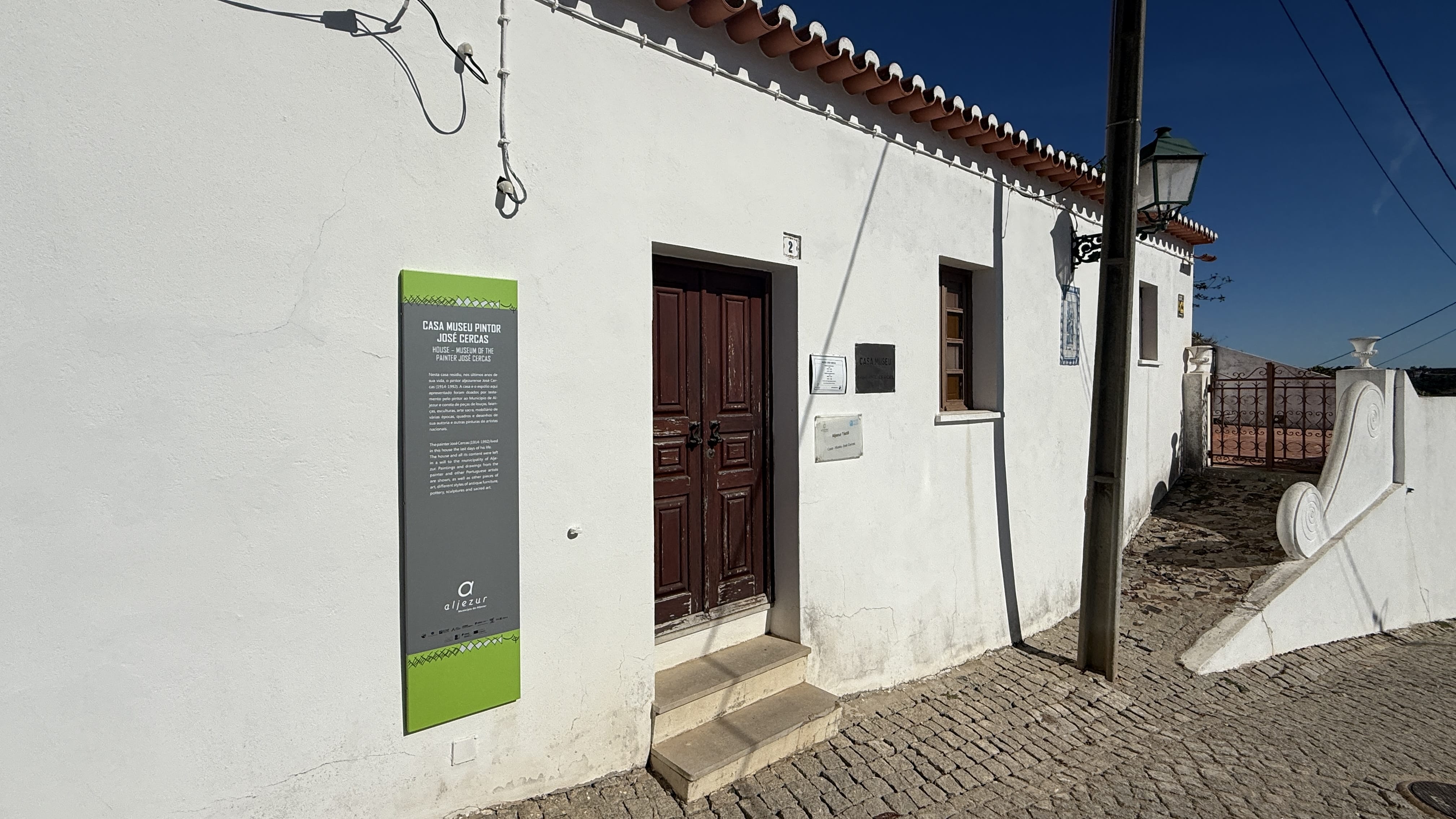
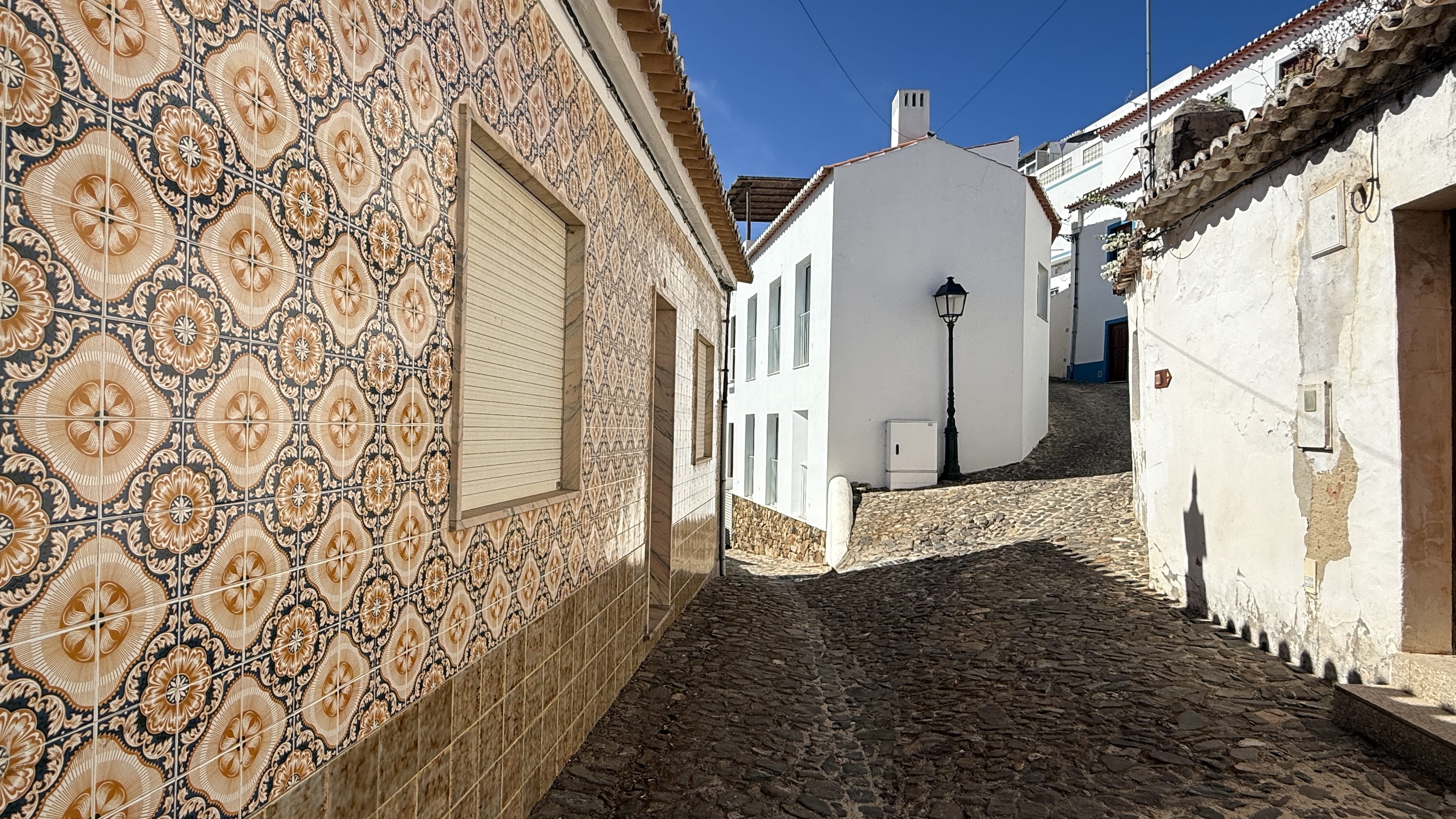
My guide had raved about a gelato shop—Gelataria Vicentina, known for switching up its flavors every day. When I spotted it, I figured I had to stop. I went for two scoops: chocolate and strawberry cheesecake. The strawberry cheesecake might have been the best gelato I’d had in Portugal (yes, even better than Nannarella’s in Lisbon).
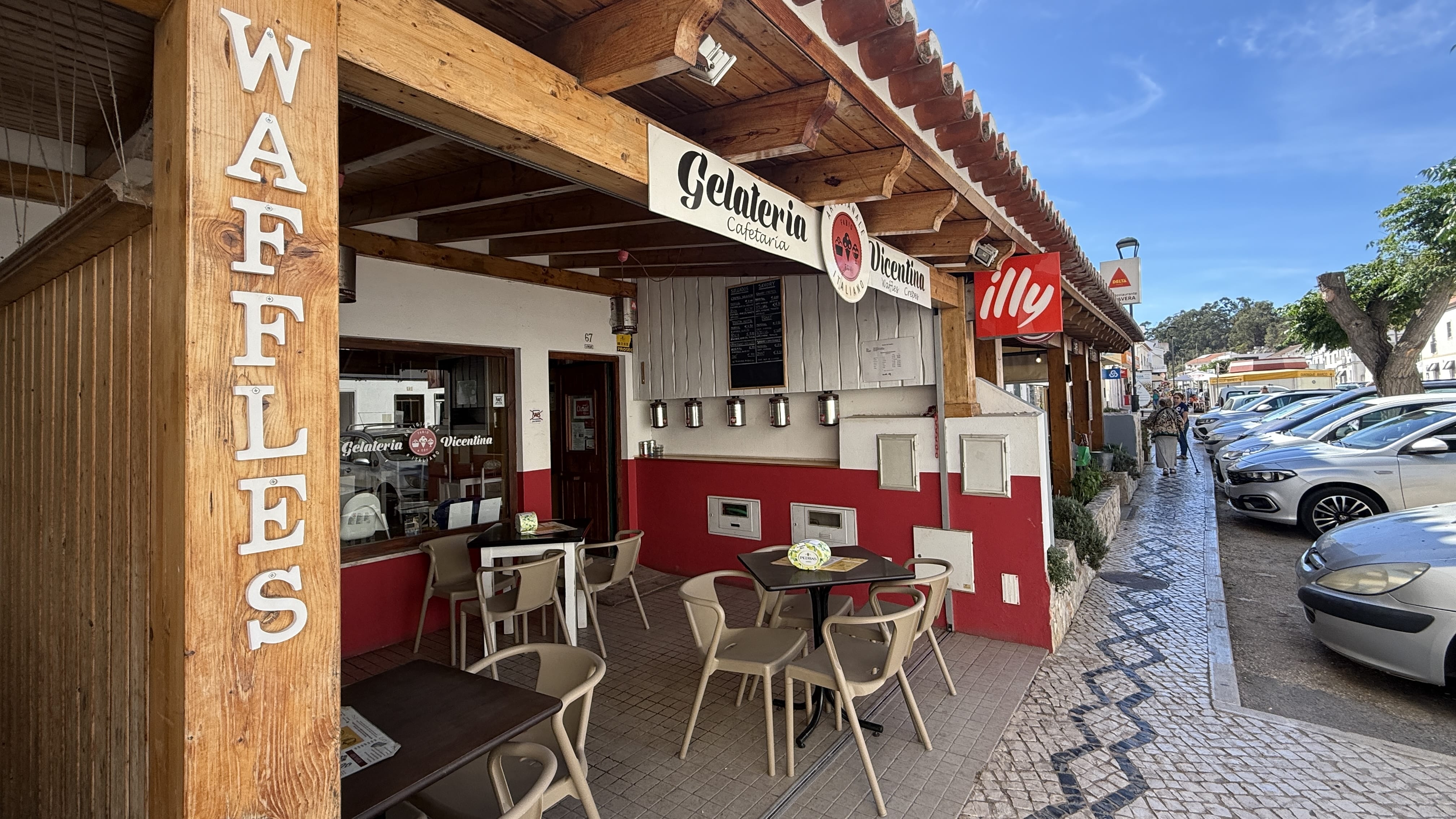
One of my fellow hikers happened to wander by and joined me. We talked while enjoying our gelatos, and when we finished, she decided to go for another cup. She tried lemon basil and After Eight (a mint gelato with chocolate). I gave in too, though I wasn’t as adventurous—I stuck with another round of strawberry cheesecake. No regrets.
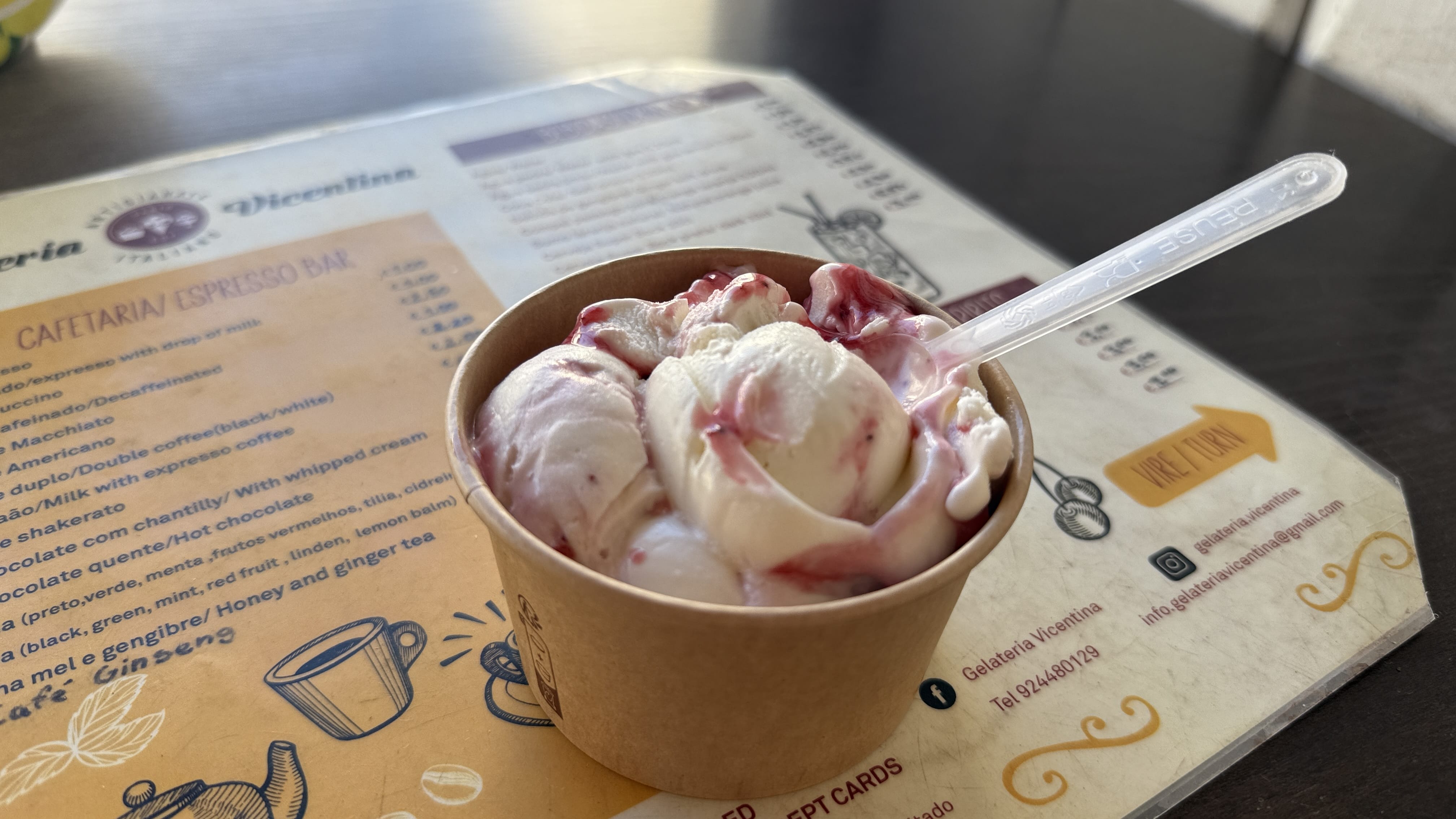
There were plenty of cafés along the main street that would’ve made a nice lunch stop, but after all that gelato I didn’t have the room.
That evening we ate in the newer part of town at Restaurant Varzea. I had sweet potato soup and a vegetable tagine (again with sweet potato)—simple but excellent.
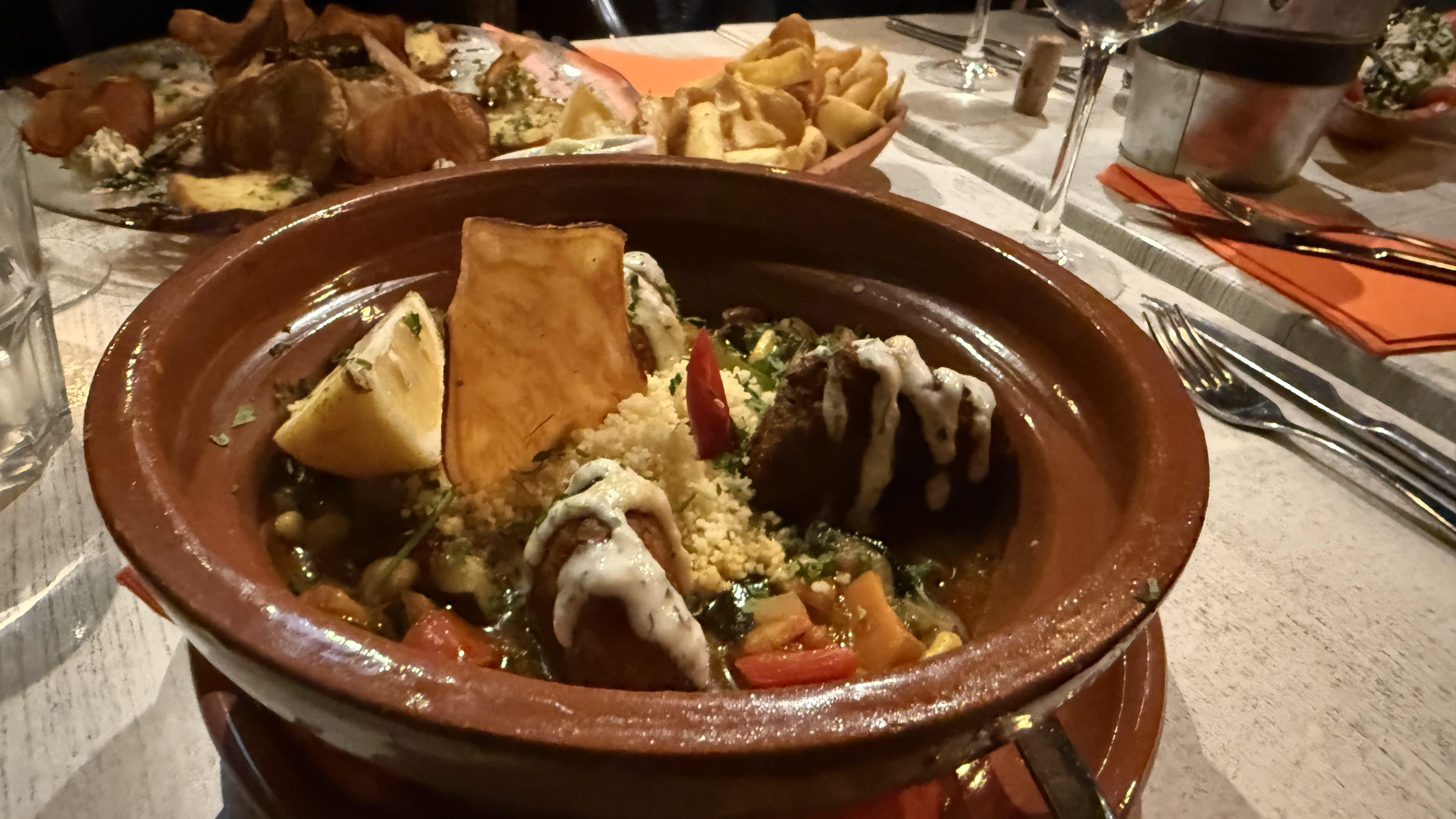
It wasn’t a busy day, but between the castle, the wandering, the gelato, and dinner, it felt like a nice reset before heading back to the trail.
We transferred to Vila do Bispo and picked up the trail for the last stage. I knew it would be another long day—but I didn’t care. I didn’t want it to end, because it also meant it would be my last day hiking the trail.
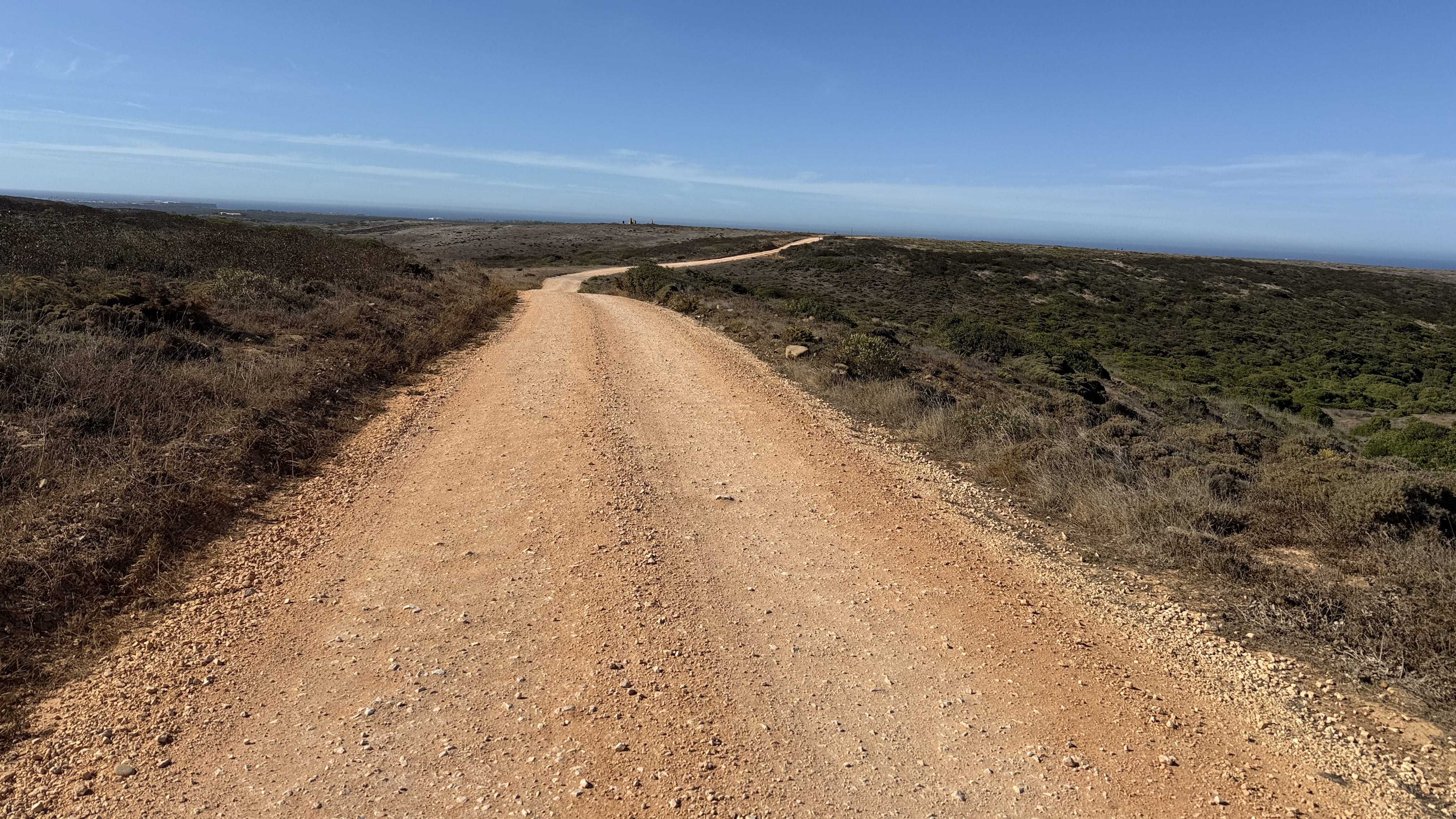
At first, we followed red-and-white markers (the Historical Way, which overlaps with the Fishermen’s Trail in parts) before reconnecting with the Fishermen’s Trail and its familiar blue-and-green stripes. Some posts were covered in tiny snails—hundreds of them clustered together, clinging high on the wood to escape the heat.
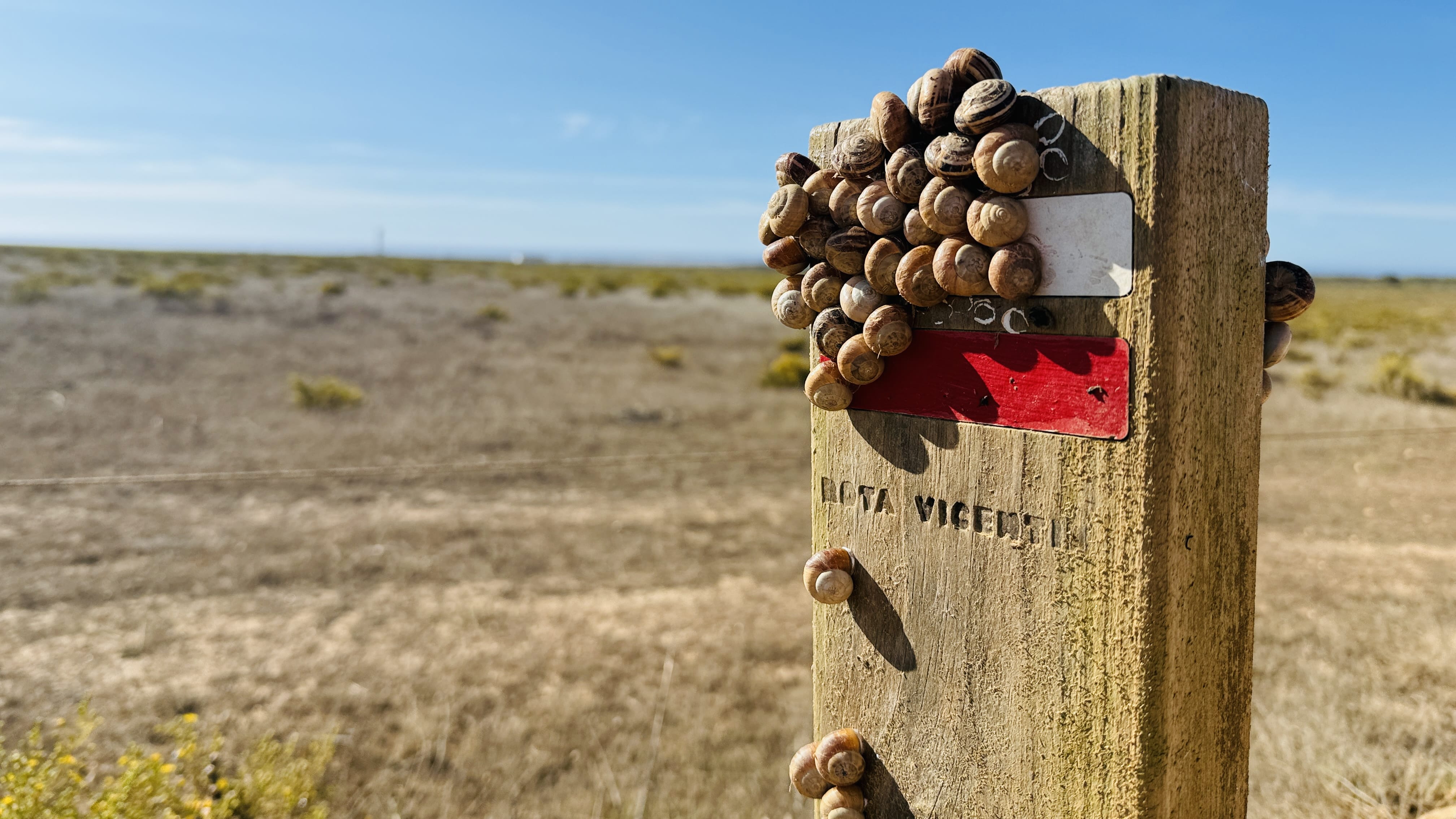
At one point we passed a cluster of menhirs—prehistoric standing stones scattered across the Algarve. They looked strange and out of place compared to everything else around. The coast was wild and exposed—scrubby plants clinging to the cliffs, including Mediterranean buckthorn, its small glossy leaves catching the sun. I kept stopping to take in the view.
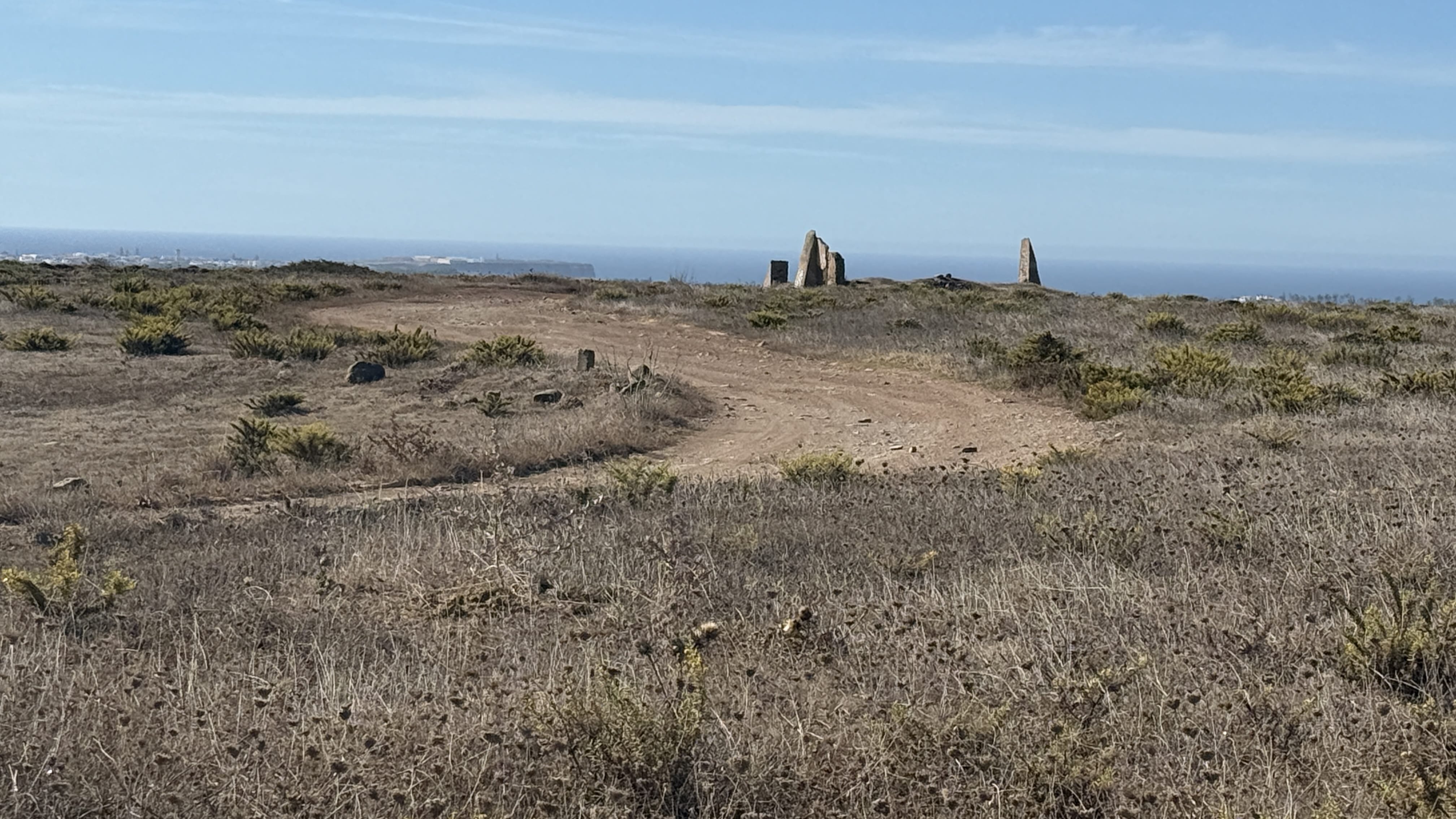
We took a break at Cabo de São Vicente (Cape St. Vincent), the southwestern most point of mainland Europe. The cliffs dropped straight into the ocean, the wind so strong I had to step back from the edge. The Cabo de São Vicente Lighthouse, one of the most powerful in Europe, has guided ships for centuries. The place was packed with visitors, cars lined up along the road, and food trucks selling sausages, snacks, and drinks. One sign on a bratwurst stand made me laugh—“Letzte Bratwurst vor Amerika” (“Last Sausage Before America”).
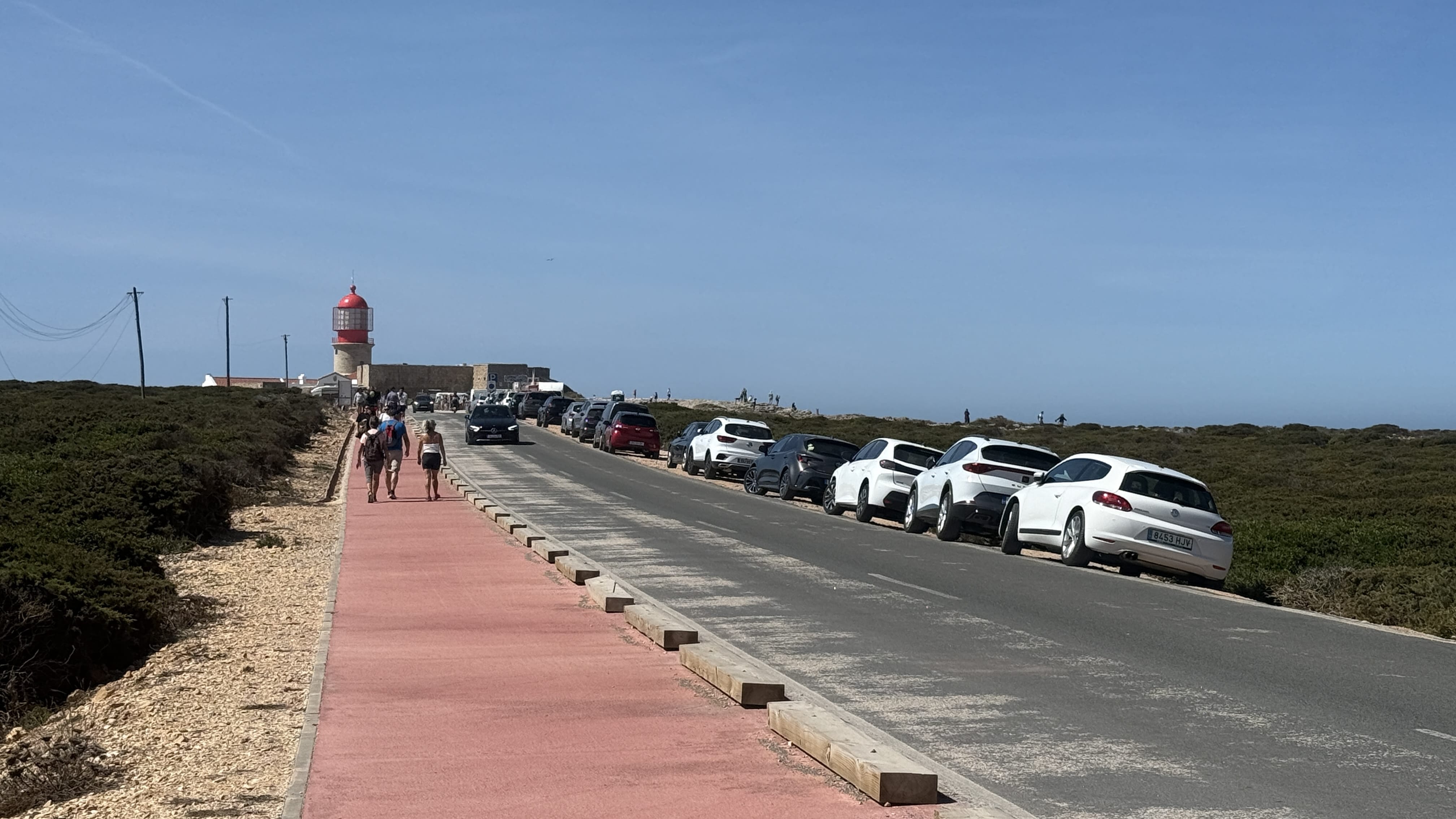
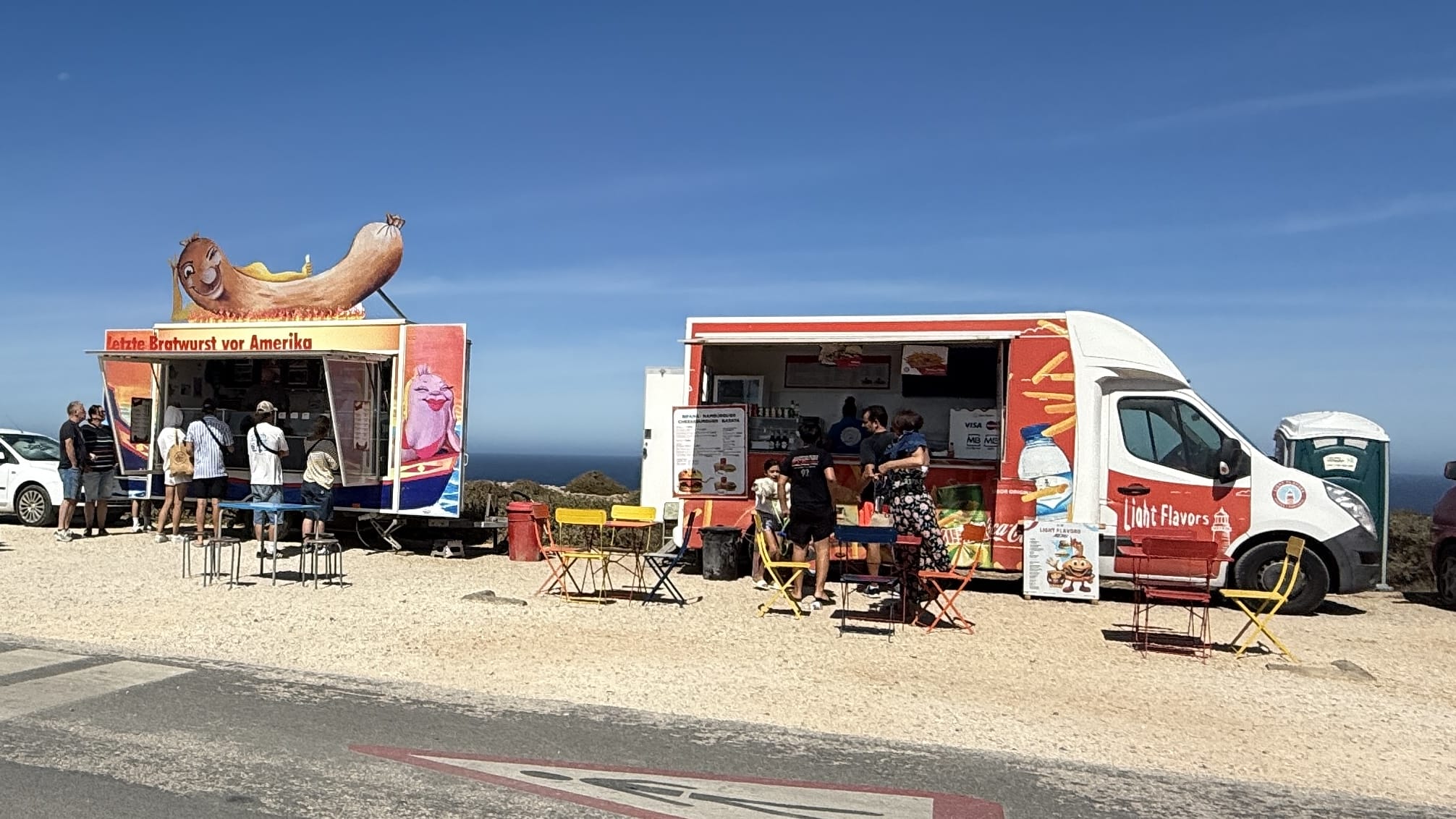
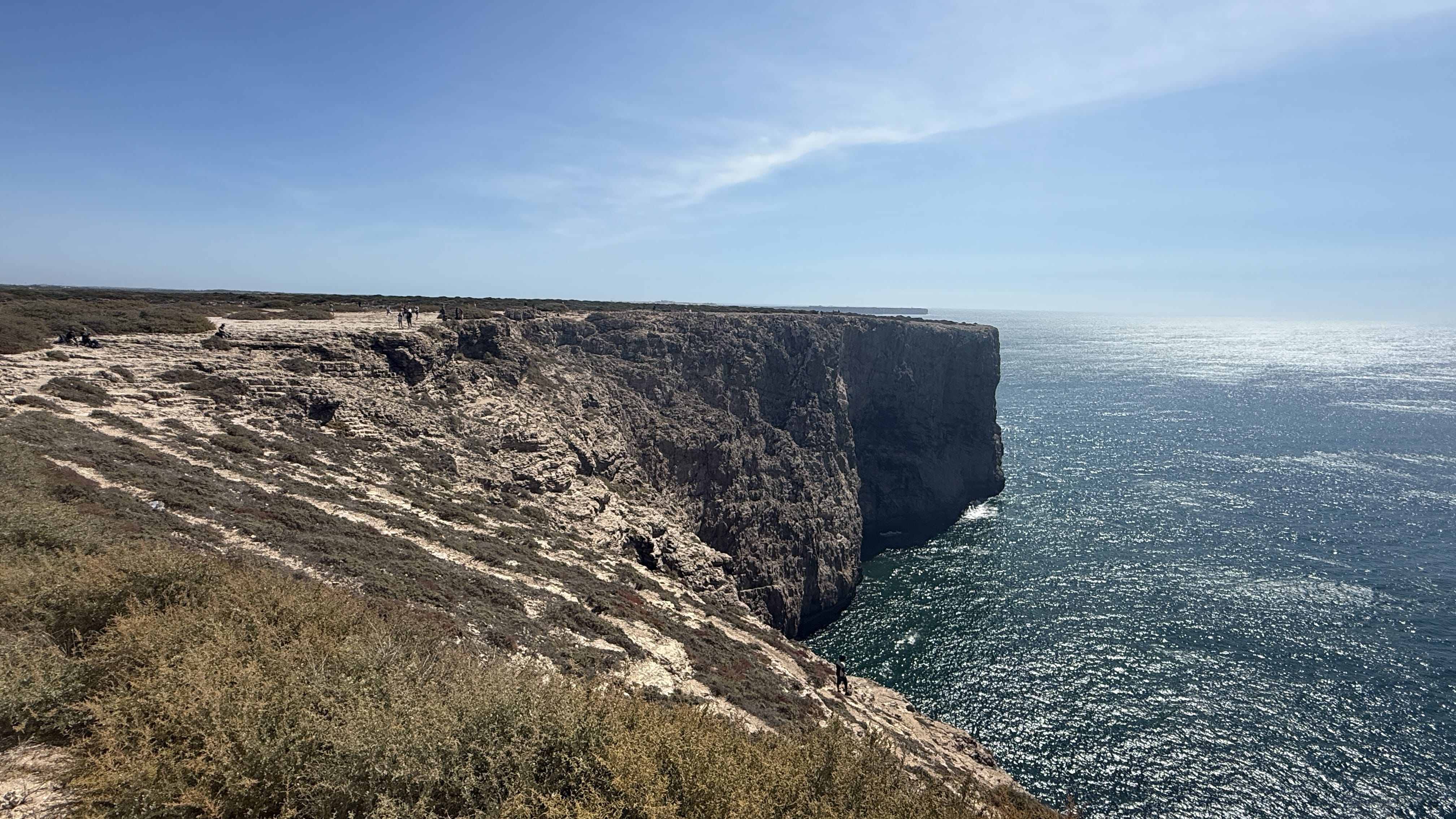
Continuing on toward Sagres, the views didn’t let up—cliffs, waves, endless ocean. In the distance we could see Sagres, inching closer with every step.
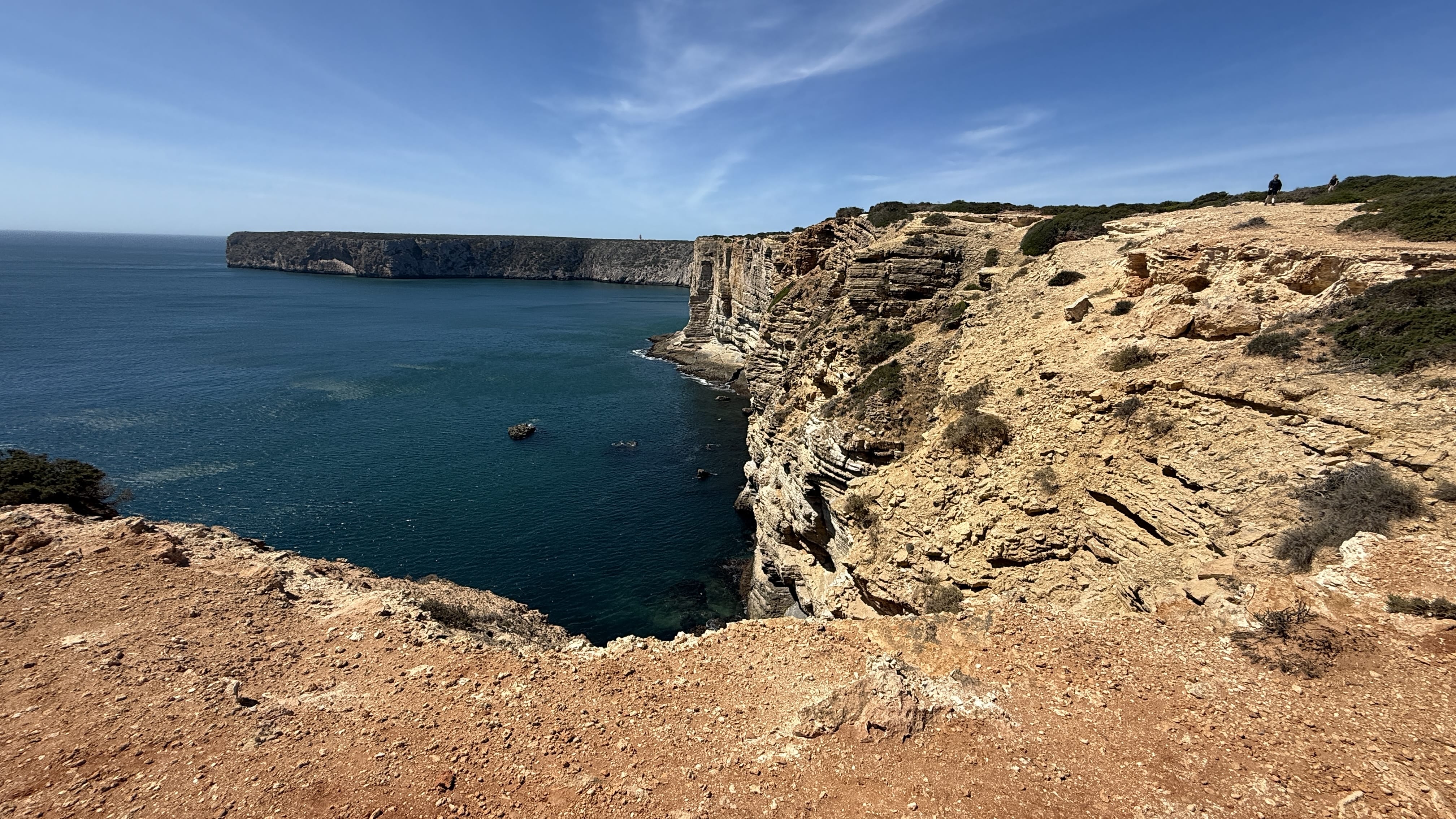
As we approached town, the trail turned rocky—like crossing a field of boulders—which made the final stretch slow. By late afternoon we reached Sagres, larger and busier than the fishing villages before, with surf shops, casual restaurants, and travelers mixing with locals. Our hostel, Sunstay, sat just outside the center, so we walked a bit farther to reach it.
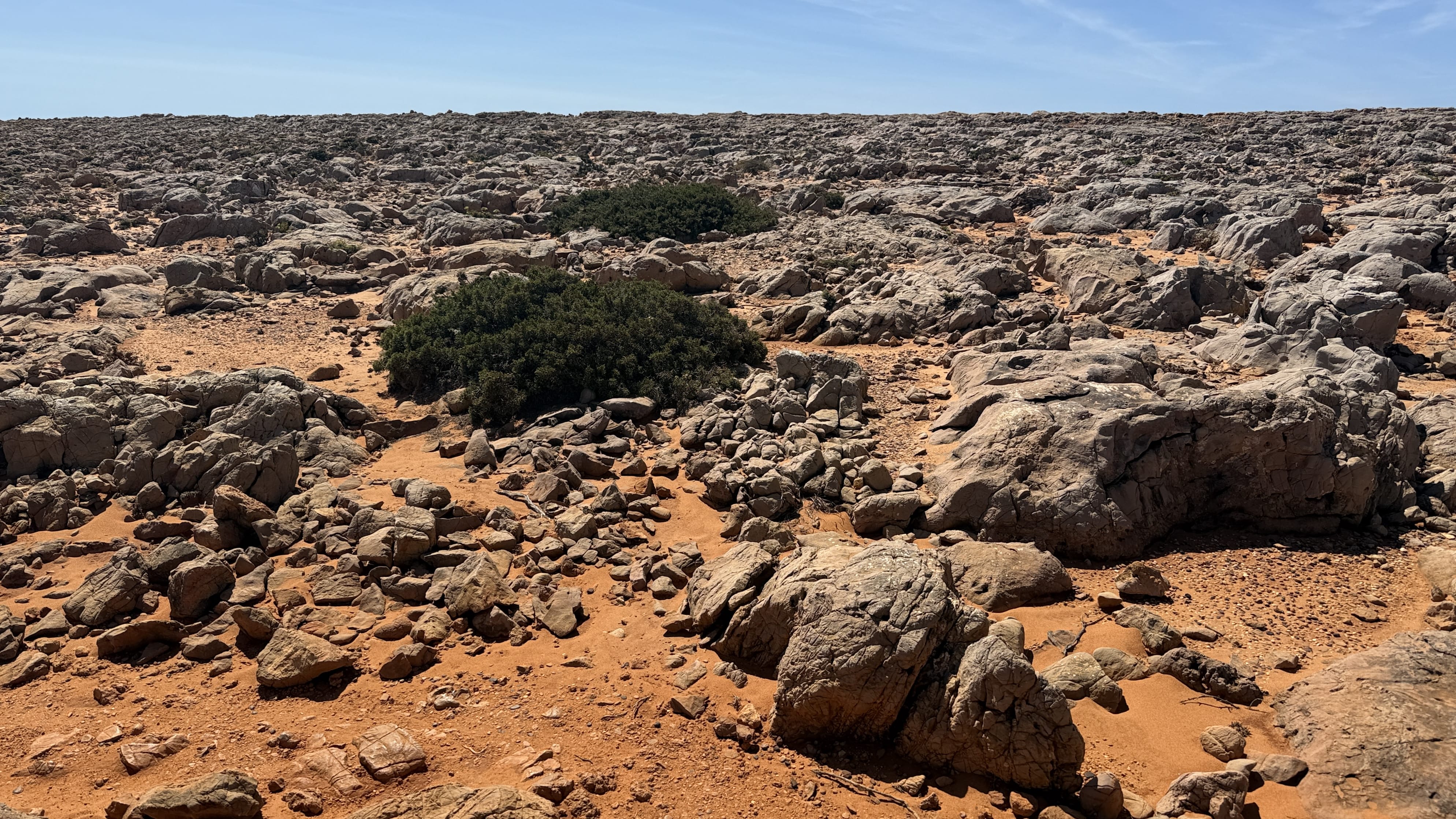
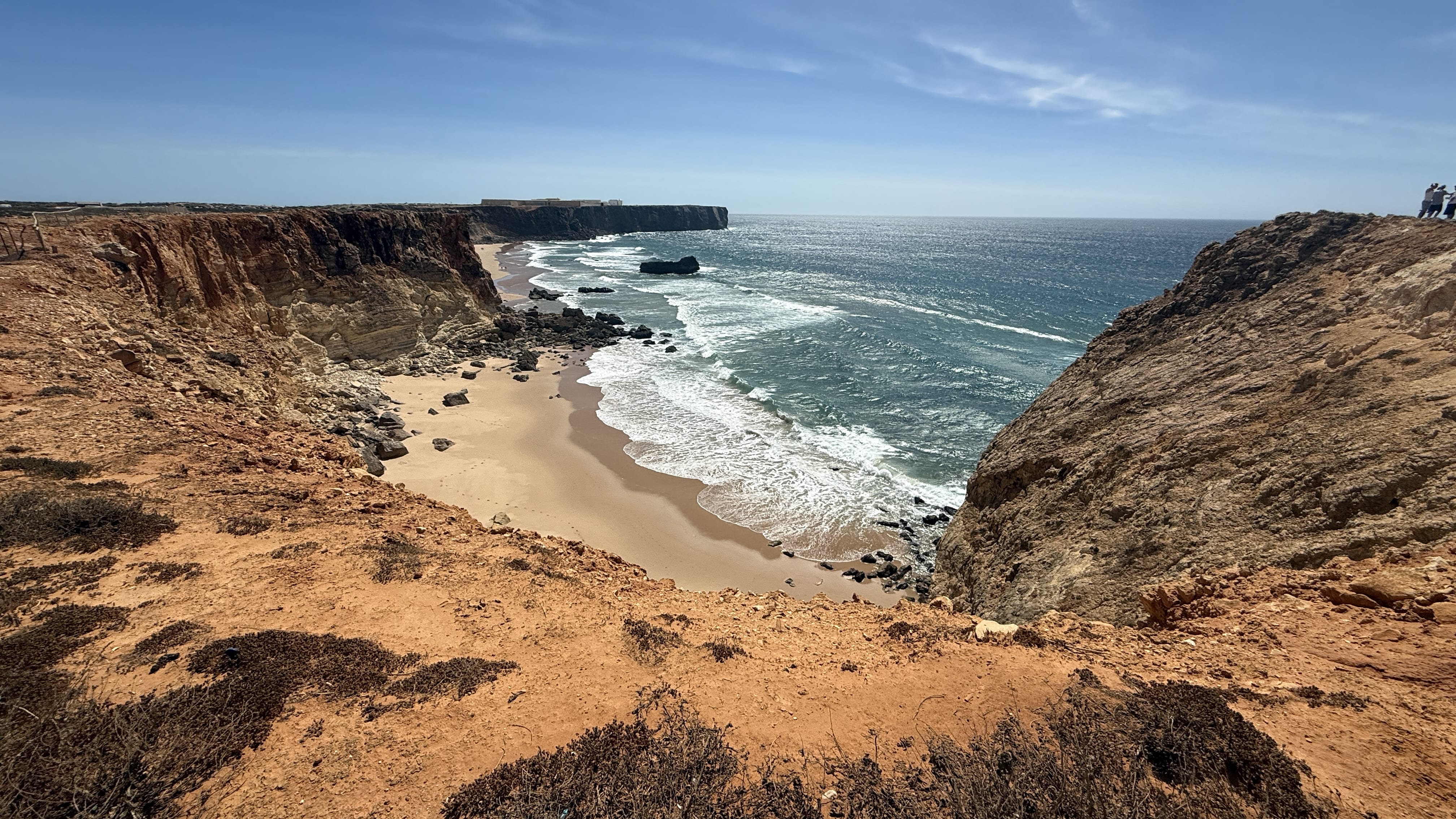
Before dinner I walked down to the Fortaleza de Sagres (Sagres Fortress), set on a headland above the sea. From the outside it doesn’t look like much—just a thick wall and a single massive gate—but inside there was more than I expected. The cliffs dropped away on three sides, giving wide views over the Atlantic and back toward Cabo de São Vicente.
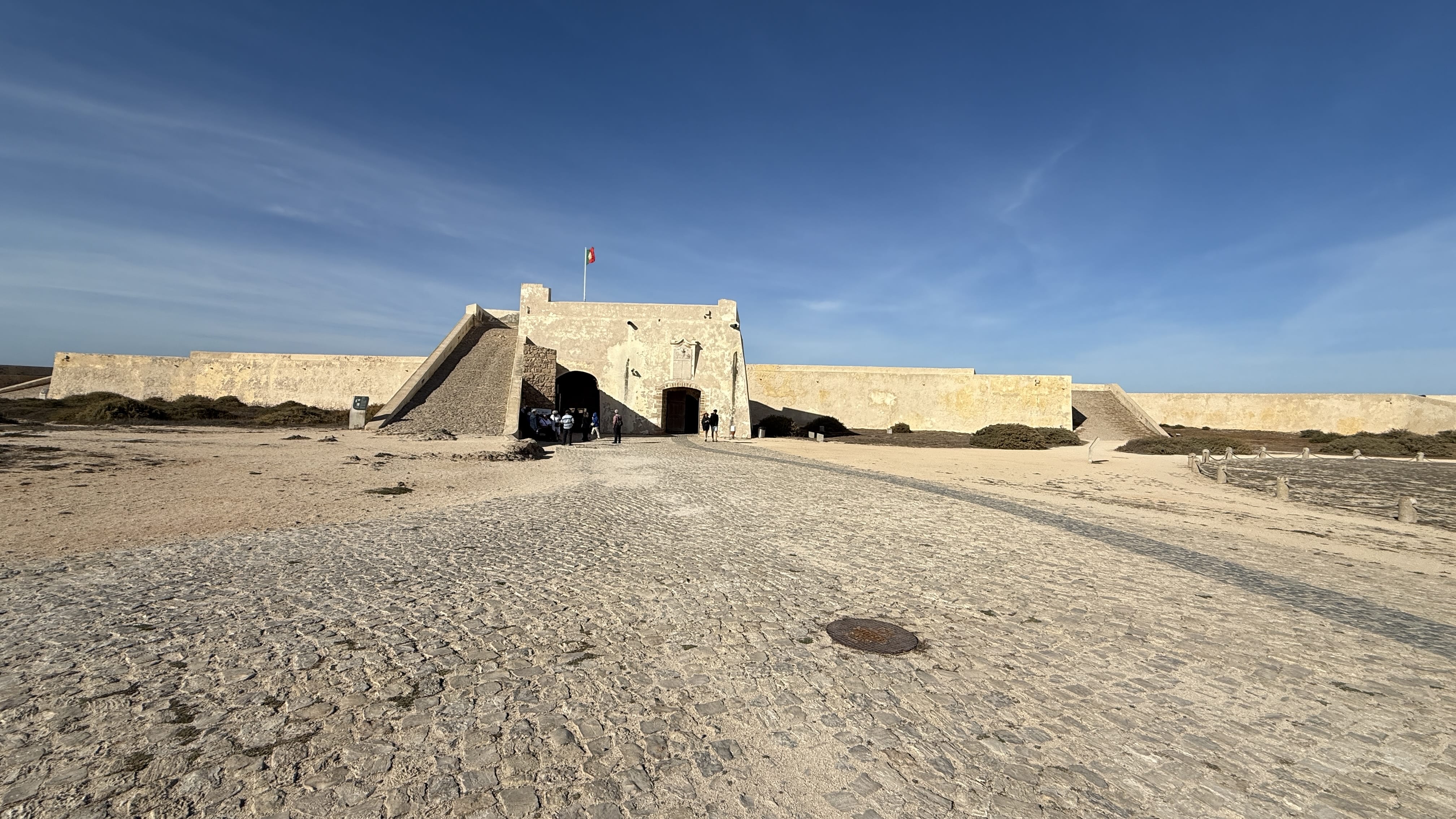
There’s a small church and the Rosa dos Ventos, a massive stone compass rose laid out on the ground. Some say it was used for navigation training during the Age of Discovery, though no one really knows for sure.
On the way back, our guide pointed out the restaurant chosen for our final dinner It mainly had fish on the menu, with nothing vegetarian beyond an omelet—not exactly what I wanted for a last meal together.
I told my guide I’d be skipping dinner with the group and instead went to Holi Diwali, a small Indian restaurant I’d noticed earlier, run by an owner from Punjab. It was the right call.
After dinner I rejoined the group back at the hostel, where we shared one last drink to toast our week and say our goodbyes.
I grabbed breakfast at Picnic Sagres, a popular café known for its coffee and pastries. I went with a bagel and a cortado—the coffee was spot on. The place was packed, clearly a favorite with both locals and visitors
From there I wandered around downtown Sagres, filled with shops, restaurants, and a laid-back surf vibe, before heading down to Praia da Mareta (Mareta Beach), the town’s main beach. It turned out to be really nice—there was even a spot renting loungers and umbrellas, with Raposo Restaurant & Beach Bar right by the sand serving smoothies, snacks, and of course cocktails. I actually kind of regretted not adding an extra day here. It would’ve been fun to just watch the surfers, sip a drink, and read a book on the sand before heading back.
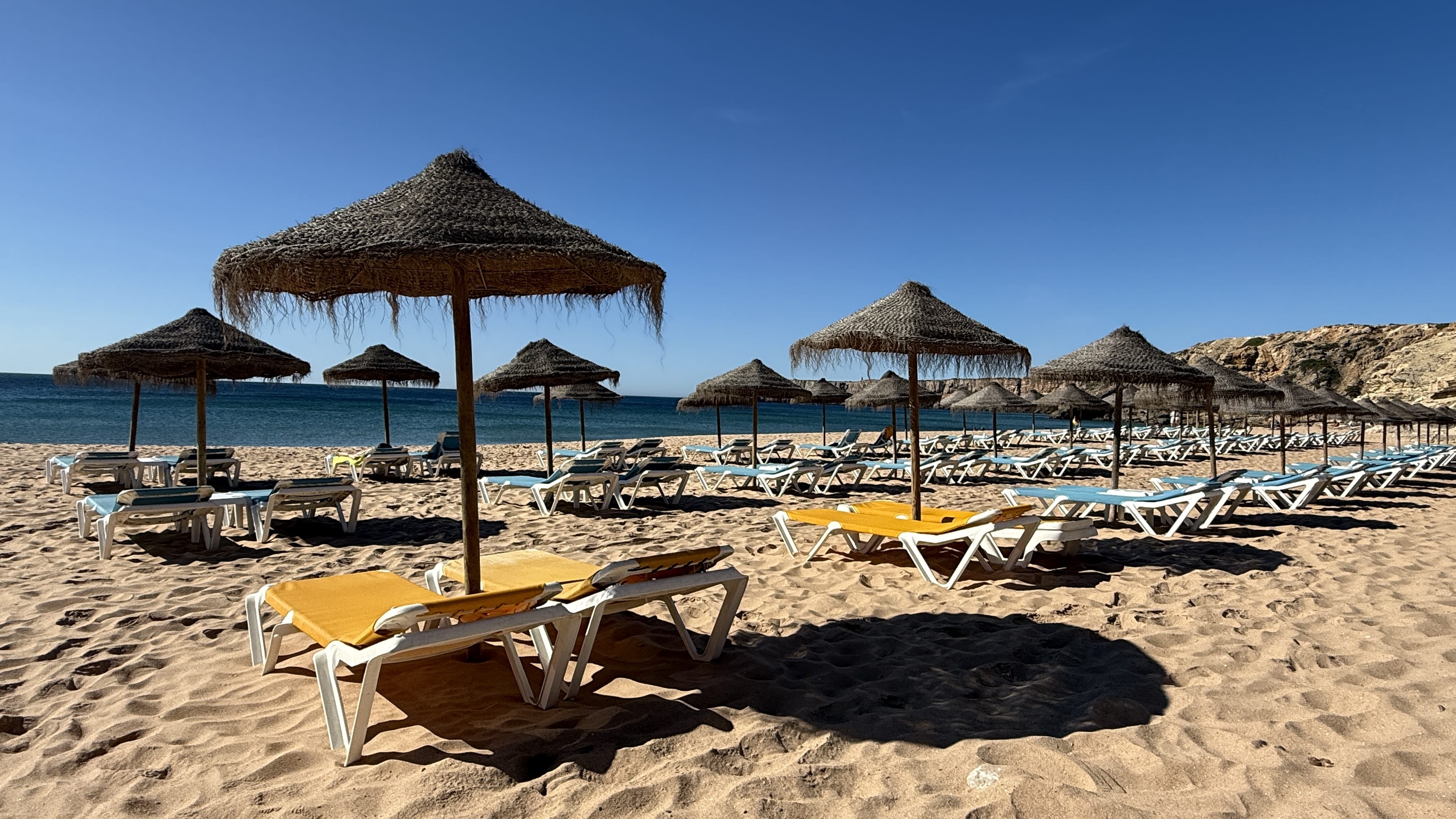
By early afternoon it was time to leave. I caught a ride back to Lisbon using Daytrip, giving myself a couple of days to rest before flying home. I love Lisbon, but I wasn’t quite ready to leave the coast behind—the hiking, the coastal views, the sound of the Atlantic
I hiked the Fishermen’s Trail at the beginning of September, when it was still hot but manageable—most days the ocean breeze kept it comfortable. A liter of water was plenty, my La Sportiva approach shoes worked perfectly, and I only bothered with a hiking pole on the steeper days.
The trail never felt crowded. Aside from the occasional hiker (except for that one bottleneck when someone slipped), it mostly felt like we were out there alone. The wind was constant—sometimes so strong it nearly blew my hat off. More than once I caught myself laughing, thinking of that old show The Flying Nun and hoping I didn’t end up airborne too.
The Fishermen’s Trail lived up to its reputation: wild cliffs, endless beaches, small towns that still feel local, and enough sand to make you earn every mile. Six days was only part of the full route, but it gave me exactly what I came for—the wild coast, the challenge, and the feeling of following the ocean mile after mile. I’d love to come back again someday and hike the entire trail.
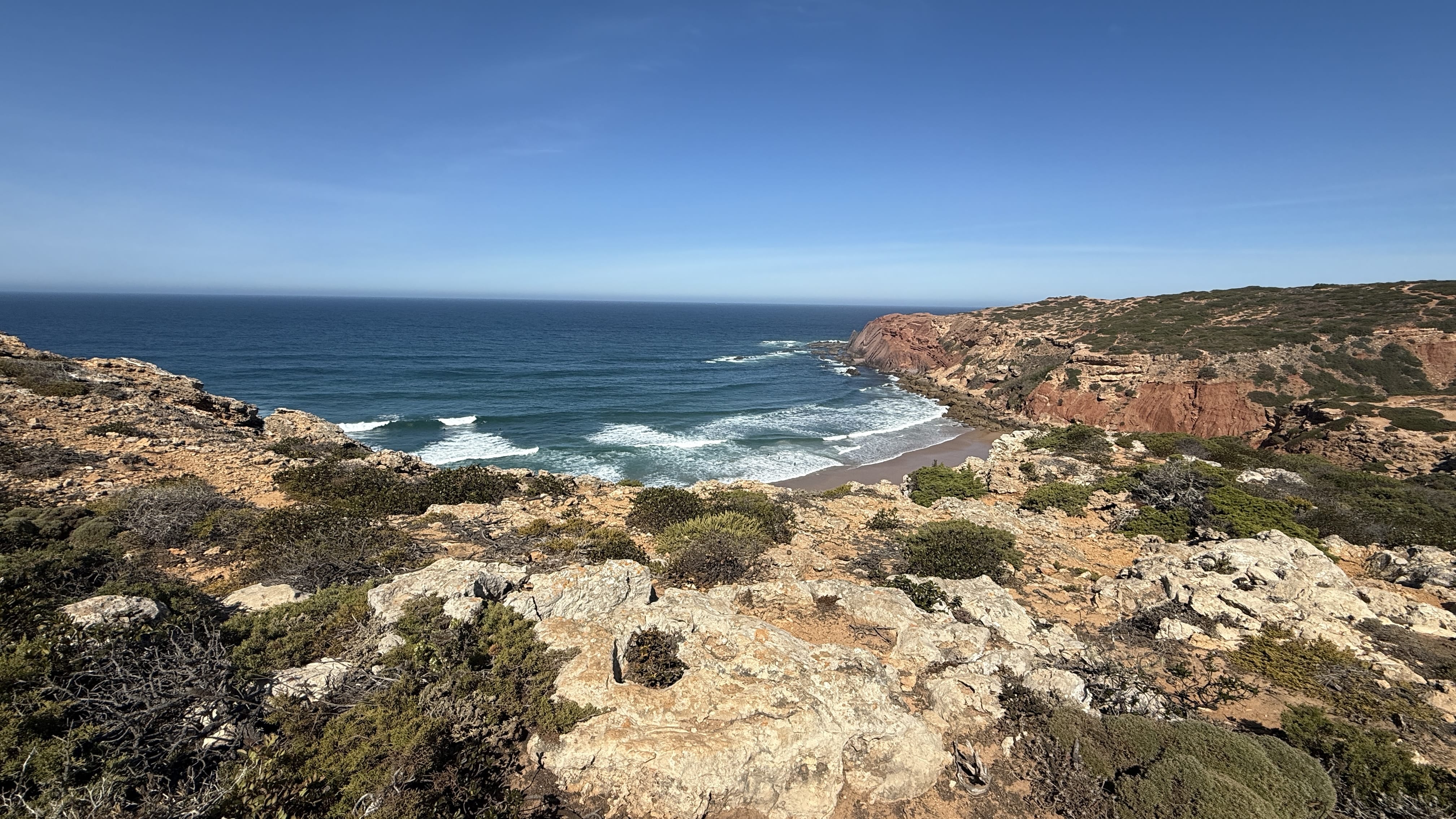
One thing that really bothered me was the toilet paper. With no toilets along the path, you do what you have to, but it shocked me how many people left paper behind. In some spots it was everywhere. It might break down eventually, but that doesn’t make it okay. “Leave no trace” means exactly that—including toilet paper.
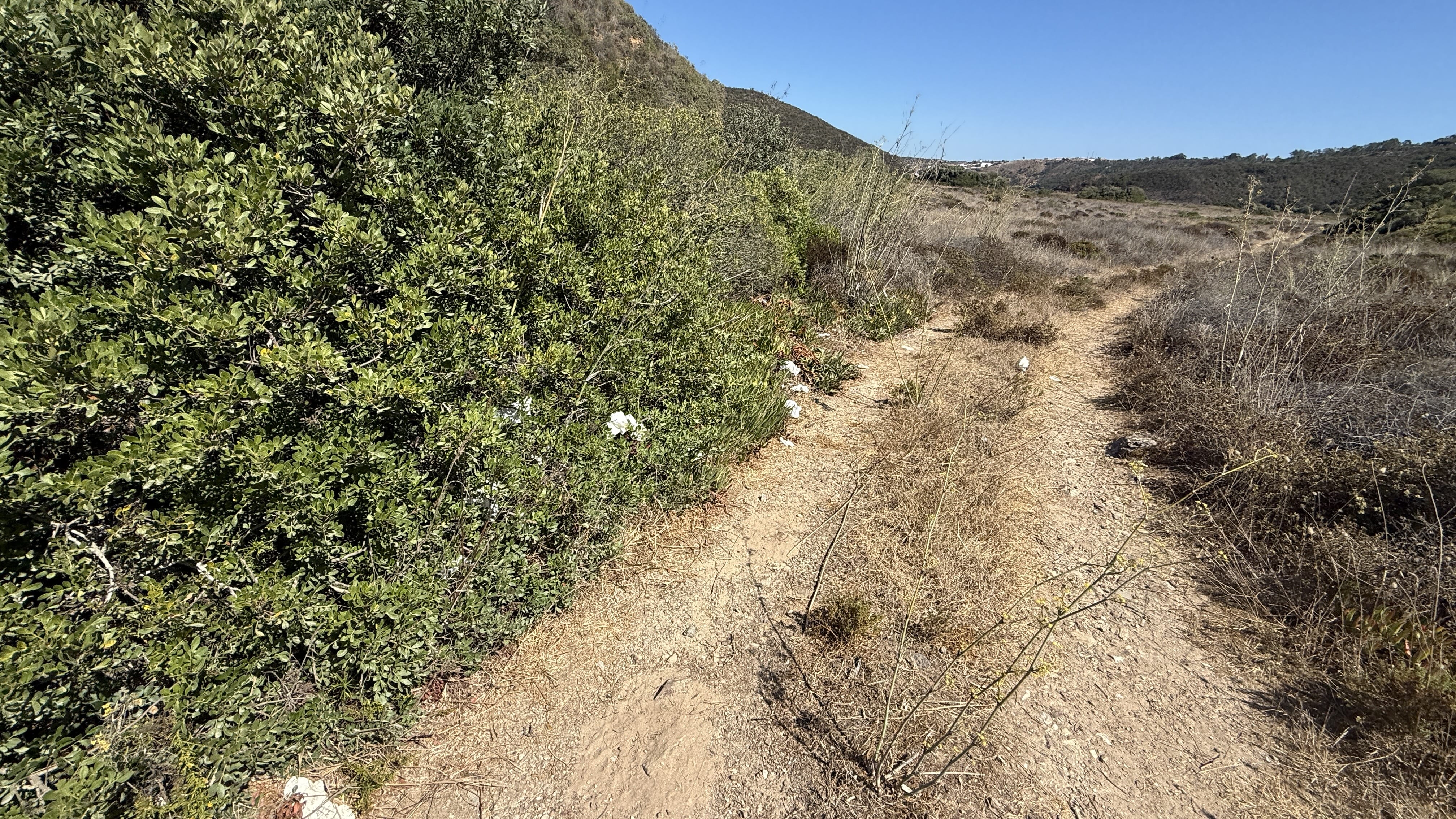
Nothing fancy—which I didn’t expect or need—but they did the job. Most were mid-range, clean, and within walking distance of restaurants or cafés. A couple had pools, which was a nice bonus. The only one I didn’t care for was in Aljezur, where the towels were gray and the bedding flimsy. But overall, the places were comfortable enough for a week of hiking.
I hiked the trail with Intrepid Travel, and the experience was fantastic. If you’re going solo and don’t want to hike alone, there are a few companies (like Hillwalk Tours) that also run portions of the Fishermen’s Trail. But with Intrepid, everything from logistics to group size worked well. The only thing I personally could have done without was the free day in Aljezur—otherwise, the trip was perfect.